Is Radio Advertising Effective?
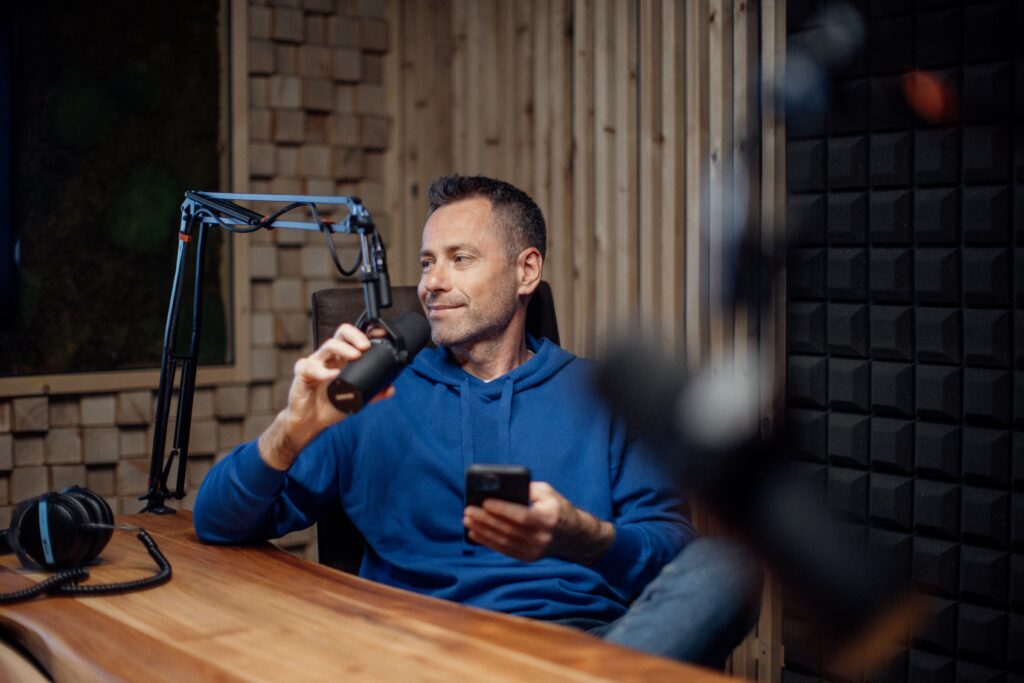

Intro to radio advertising
With all the marketplace buzz about podcasts and streaming music services like Spotify, Apple Music, and Pandora, it’s easy to underestimate the power and efficacy of AM/FM Radio. However, common perceptions are much different than the realities of AM/FM radio usage, ad penetration, and ad effectiveness.
According to Edison Research’s “Share of Ear” Q3 2023: How America Listens to Audio study, AM/FM radio continues to be a powerhouse for audiences and advertisers alike for the following reasons:
- AM/FM Radio dominates the total Share of Ear with 37% of time spent by individuals aged 13+.
- AM/FM radio accounts for 76% of the daily audio time spent with any ad-supported platform
- The audience share of AM/FM radio is 19X larger than ad-supported Spotify and 13X larger than ad-supported Pandora
A good reminder for us all from Mark Ritson, Marketing Professor : “There is increasing global evidence that marketers are basing their media choices on their own behavior or that stoked by the digitally obsessed marketing media, rather than actual audience data … The first law of marketing is that you are not the market. You are an urban, professional, well-paid media executive. Everything you think and do is from a highly unrepresentative n of 1.”
Another important observation from Nielsen and Westwood One that leads to this misperception is that “It is not uncommon for brands to report that AM/FM radio does not perform well in media mix modeling studies. AM/FM radio is such a small part of many national media investments that the media mix model has a hard time generating a stable and reliable read. Media mix modeling is a self-fulfilling prophecy. It reads well for the largest media investments in the plan. The small elements in the media plan experience “performance bounce” in sales volume and return on marketing investment metrics.”
What are the advantages of radio advertising?
AM/FM advertising is a critical channel for advertisers to use for a number of reasons, but some of the most important are efficiency, unduplicated reach, and high ROI.
Affordability: how much does radio advertising cost?
- The average cost of a 60-second radio advertisement ranges from $5 to $750 when measured by cost per point (CPP). Factors that impact radio advertising costs include size of audience, listener demographics, time of day, the market the ad runs in, whether the ad is sponsored or not, and ad length.
- As a rule, the more listeners a radio station has, the more customers it can reach, making your radio advertising costs higher.
- The cost of entry for AM/FM radio advertising is considerably less than other broadcast-type mediums.
Read more: How Much Does Radio Advertising Cost?
Ability to reach a broad audience
According to Edison Research’s “Share of Ear” Q4 2022: How America Listens to Audio, AM/FM radio has a high degree of unduplicated reach with streaming platforms and is largely ubiquitous regardless of location of listening: The audience share of AM/FM radio is 18X larger than ad-supported Spotify and 15X larger than ad-supported Pandora
AM/FM radio’s share of ad-supported audio is far and away the largest among persons 18+ - significantly more than podcasts (15%), Ad-supported Pandora (5%), Ad-supported Spotify (4%) and Ad-supported Sirius XM. AM/FM radio streaming generates a +36% lift in incremental reach to podcasts
Also according to Edison, AM/FM radio’s reach has grown among Gen Z, reaching over half ( 55% ) of those aged 13 to 24 in the U.S. daily. Since Gen Z makes up 40% of all consumers, and they are rapidly generating more wealth to spend, this is a powerful demographic to reach. Yet, radio doesn’t stop there—it also powerfully connects with other demographics. For example, 84% of those aged 55+ are reached each week by radio; 83% of those aged 25-54 are also tuning in weekly.
High ROI with case studies to back it up
- Office Supply Retailer: Nielsen Sales Effect Study: AM/FM Radio Campaign Grows Sales +11%, Increases Customer Base +6% and Expands Share of Category Spend +21%
- Department Store: Nielsen Sales Effect Study: AM/FM Radio Campaign Grows Sales +10%, Increases Customer Base +17% and Expands Share of Category Spend +15%
- US Auto Dealers: Need to Increase Their AM/FM Radio Advertising to Reach Consumer Who are Ready to Buy
What Makes a Radio Advertisement Effective?
The key aspects of radio advertisement success include: effective media planning, high-performing creative, and setting yourself up for measuring success.
Plan the proper weight levels to achieve your goals. The most important considerations are:
- What other media is planned in the market
- Individual market dynamics
- Target demographics
- Audience interests and affinities
- Advertising category
- Time of year
- Product purchase cycle
Make yourself memorable with great copy and creative
- Consistency is key. From the music, to the voiceover, to the call-to-action - be consistent in your creative . You want your audience to know you are the advertisers even before the brand name is mentioned in the spot. Develop strong audio branding techniques.
- Be singular in your focus. Each radio spot should convey one message. Because there is not an option for user-initiated extended engagement like there is with internet ads, you need to build creative for the finite inventory you are buying. Keep it simple, smarty!
- Having a clear and simple call-to-action goes hand-in-hand with having a singular focus with your messaging. Single message, single call-to-action.
Get Inspired: Radio Advertising Types & Examples
Measuring success with AM/FM radio advertising should focus on the following KPIs
- One of the most important measures of success is how well you reached your target audience. It is important to plan against reach during the planning process and measure overall delivery post-flight.
- Brand Lift or Brand Awareness studies are important survey-based methods to use to measure the impact that AM/FM advertising is having on shifts in audience opinions.
- Compare the total number of website visitors after you began running radio ads to your total number of website visitors during the months before or use a vanity URL to more directly attribute traffic
- Conduct year-over-year and month-over-month analyses to see if sales are up or down in relation to the airing of your radio ads. By using radio-specific promo codes, you can directly attribute sales to your ads.
- You can calculate your overall return on ad spend (ROAS) by dividing the revenue from total sales by the total amount that you spent on the radio advertisements
Does radio advertising work?
For all the above reasons, AM/FM radio is the centerpiece of audio. According to Nielsen, AM/FM radio represents 73% of ad-supported audio and dominates in-car ad-supported audio with 87% of the total share .
It is a critical part of your overall media mix that continues to drive impressive real-life results.
For more information on how you can explore or optimize your radio advertising effectiveness, please reach out to the experts at Ad Results Media today.
Podcasts are the fastest growing advertising platform in the world.
It’s hard to keep up with such a rapidly changing, but increasingly successful industry. So we do it for you. Sign up to receive updates and we’ll keep you in the loop.
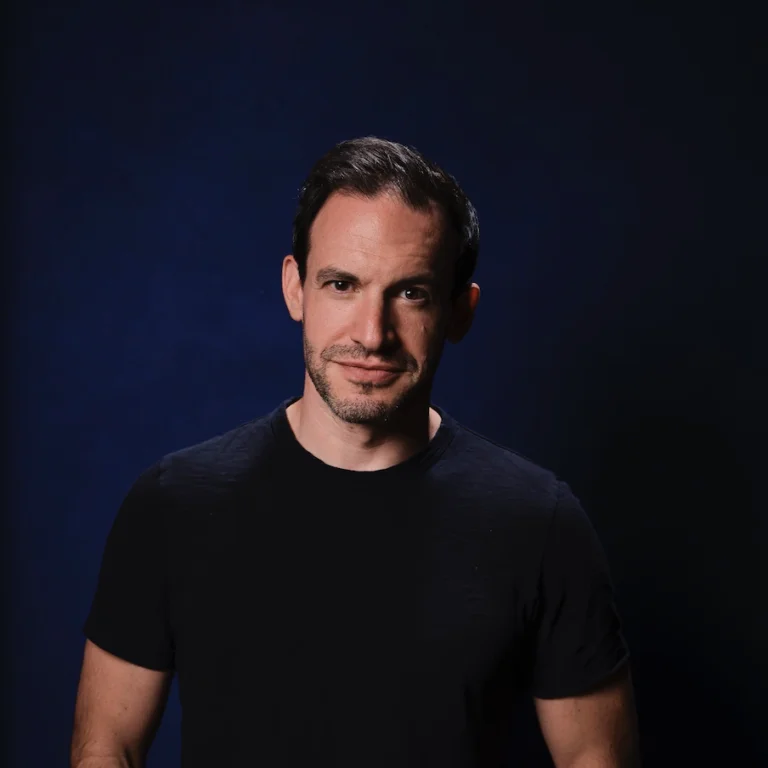
Ad Results Media Names Jordan Fox Chief Executive Officer
Joining from Laundry Service, Fox will lead agency’s expansion. New York, NY, March 20, 2024 - Today, Ad Results Media (ARM), the leading audio-focused agency known for its innovative work across podcasts, digital audio, vodcasting, and other digital audio channels, announced the appointment of Jordan Fox as Chief Executive Officer. With a rich leadership background...
Related Posts
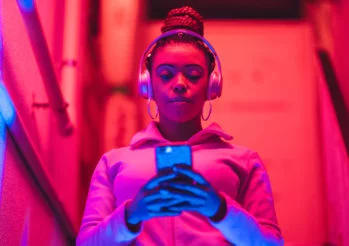
Podcasts Offer Brands A New Canvas For Connecting With Consumers
In today's media marketplace, brands are dealing with ad fraud, reduced viewability, the death of cookies and pressure to produce thumb-stopping ads.
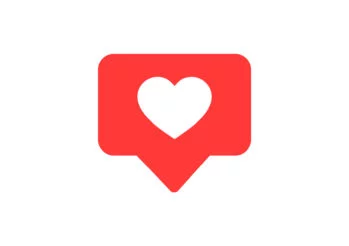
Moving From “Brand Like” to “Brand Love” with Podcast Advertising
Brand love is often defined as that moment when your loyal customers become advocates for your brand – espousing the benefits of your products or services to all who will listen. But having customers who love your brand doesn’t just feel good – it’s good for your bottom line too. According to Talkwalker’s Brand Love...
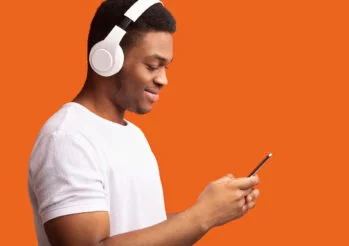
Who Listens To Podcasts (And How Can You Reach Them)?
Podcast listeners tend to be younger, early adopters of technology who can be difficult to reach using traditional advertising channels.
- On the Mic Podcast
- Creator Marketing
- Streaming Audio
- Campaign Creative
- Measurement
- Radio Advertising
- Programmatic Media Buying
- Brand Safety
- YouTube Advertising
- ARM Work Culture
- Ad Performance
- Ad Creative
- Interview Series
- Podcast Insights
- Case Studies
- Industry News
- Ad Creativity
- Media Buying
- Audience Targeting
- Performance
- Scale & Measure
Get insights from the global leaders in podcasts and YouTube advertising.
RADIO FACTS
Use the drop downs below to create a custom profile of radio listening or click here to download the 10 Reasons to Advertise .
Report Type
Select a type of report.
Choose the medium you would like.
Select a estimate.
Choose an audience type.

When you are ready, click SUBMIT to create your report.
% state radio is audio source used in-car
People 12+ listening each week, hours listening each week, % reached each month (p18+) -- radio is america's #1 reach medium, effectiveness.
Radio is America's #1 reach medium. Explore here for ideas on how to put radio's unique marketing power to work for you.
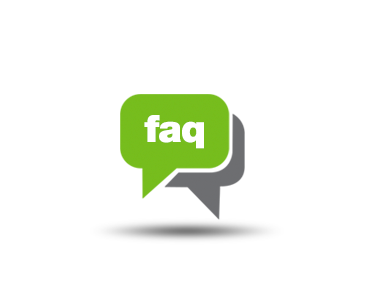
FREQUENTLY ASKED QUESTIONS
Browse through a variety of topics covering commonly-asked questions about radio and its extraordinary ability to build brands and motivate consumers.
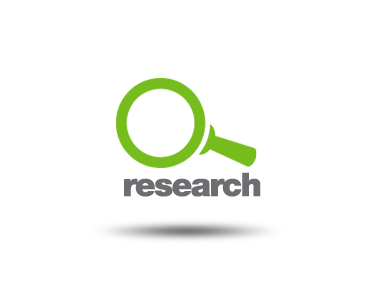
MORE RESEARCH
Find other important research studies including various studies from Nielsen Catalina Solutions, The Infinite Dial, the Jacobs Media Tech Survey and more.
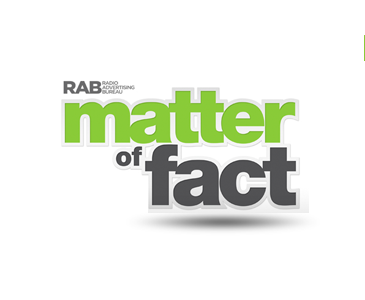
MATTER OF FACT
Keeping the advertising community in the know about radio across all platforms with information, insights and more. Click here to subscribe.
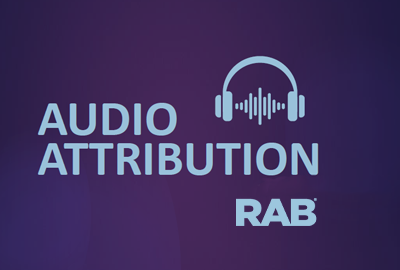
Attribution Whitepaper
RAB's attribution white paper has been prepared to showcase methodology currently available to measure the effectiveness of radio by and across platforms. Attribution is of paramount importance to the advertising community and there are many providers with capabilities to measure campaign success across radio forms. Read More
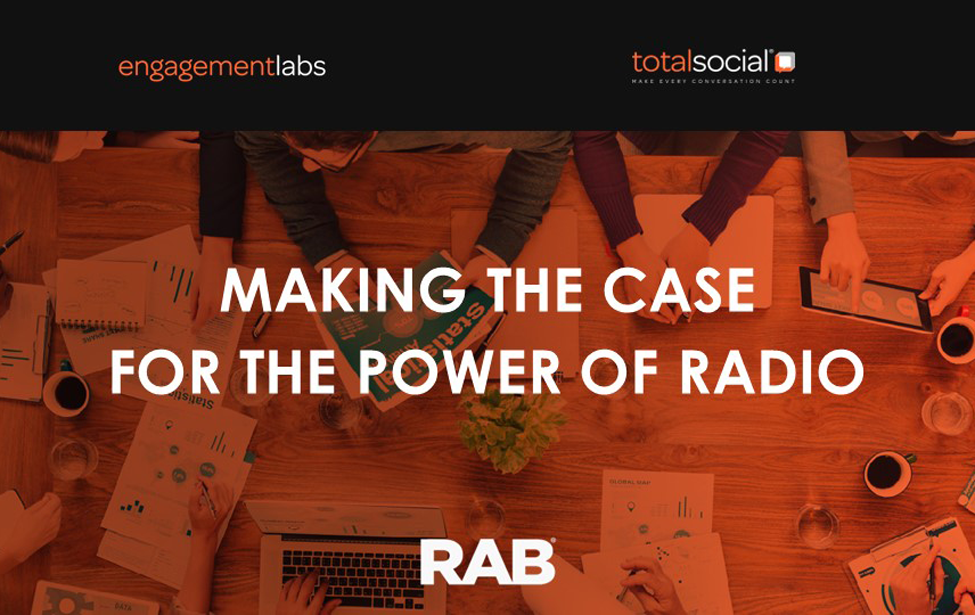
Making the Case for the Power of Radio
Engagement Labs study commissioned by RAB conveys and underscores radio's unparalleled potential as a driver of brand discussions for advertisers. The study further explores how radio driven brand conversations impact and influence behavior, social issues and purchase intent for a range of category verticals. Read More
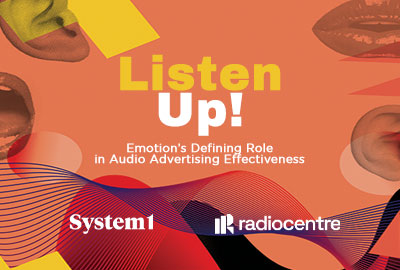
The System 1 and Radiocentre Listen Up study provides a unique lens on creative effectiveness that can be used to inspire a new generation of audio advertising creativity. The research is uniquely positioned to help understand how to make audio advertising that stirs consumer passions to drives business profits. Read More
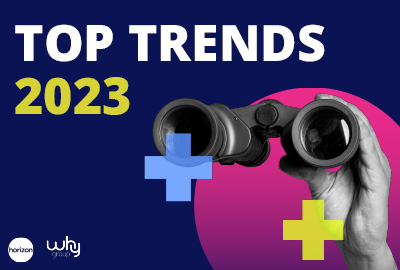
Top Cultural Trends of 2023
Horizon Media’s WHY Group has identified major cultural shifts and key forces at play influencing the nine trends we’re seeing unfold for 2023. They include ongoing inflation, an uncertain job market, a new Congress with a new party in power and a relaxing of the hypervigilance we held for the past three years. We’re starting to see the practical uses of technology that just a few years ago seemed futuristic, and at the same time, we’re grappling with the broader societal impact of these technologies. Read More
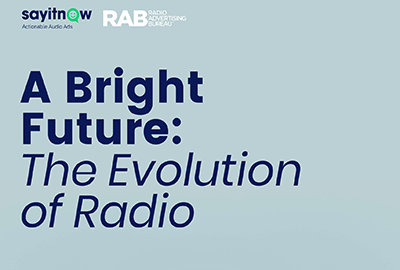
A Bright Future: The Evolution of Radio
This report shows how radio is evolving and continues to embrace technological advances to stay current and engage with the modern consumer. It also shares a glimpse into radio’s future from the perspective of audio professionals. Read More
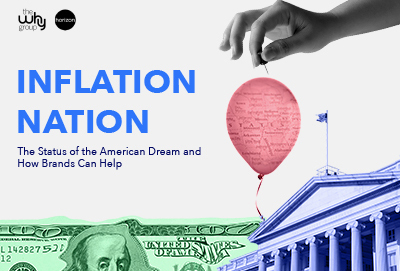
Inflation Nation: The status of the "American Dream" and how brands can help.
The U.S. is having its highest inflation period in 40 years. And this time, a once-in-a-generation event is taking place on the heels of another once-in-a-generation event. Just as people emerge from two years of COVID lockdowns, they’re being greeted by insanely high prices for everything from gas and groceries to hotels and airfare - leading to a wallet lockdown. Read More
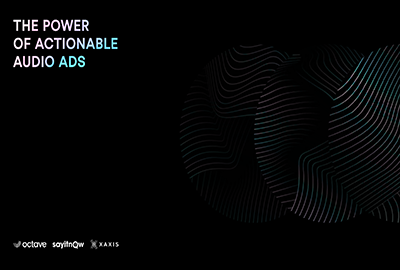
The Power of Actionable Audio Ads
Create stronger, more meaningful brand associations and drive sales by tapping into the powerful combination of conversations and voice commerce. PDF
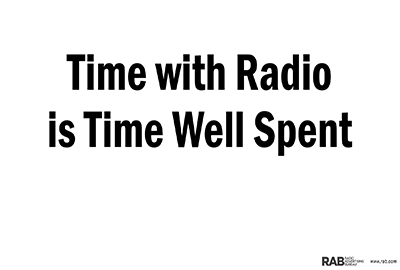
Time With Radio is Time Well Spent
Radio, across its platforms, is a go-to source for its great storytelling, the emotional connections it provides, the talent that consumers consider to be their friends and the trusted information and entertainment, whenever and wherever the listener wants and needs it. From rock to religion, from country to hip-hop, in Spanish, English or another language, radio is there offering diversity of content to a diverse listening audience. No other media option can do all this. No other media offers this to consumers for FREE. The reality is quite simple; time spent with AM/FM radio is time well spent. Letter | In Spanish | FAQs
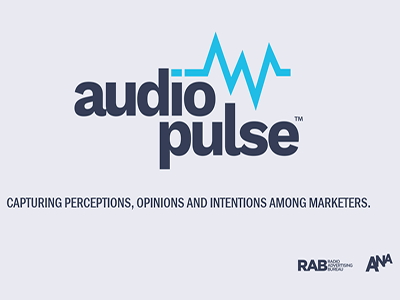
Audio Pulse: Capturing Perceptions, Opinions and Intentions Among Marketers
Radio serves many purposes in the lives of its listeners. It’s a medium that is very special to local communities - big and small, as it brings many together in a way that feels very intimate. Radio is known for its great storytelling. We trust it for information and entertainment - for crucial information, such as where to take the kids this weekend or to simply turn it up and dance to the latest hits. New research shows how radio can help brands build relationships with consumers through the power of storytelling and shared passions. In conjunction with the Association of National Advertisers (ANA), RAB brings you this presentation, which provides opinion poll results among marketers and a glimpse at how radio delivers on those insights. ANA | RAB Presentation
New from Radio Matters
Read the latest blog posts, listen to the Radio on Main Street Podcast or CLICK HERE to get Radio Matters Blogs sent directly to your inbox.
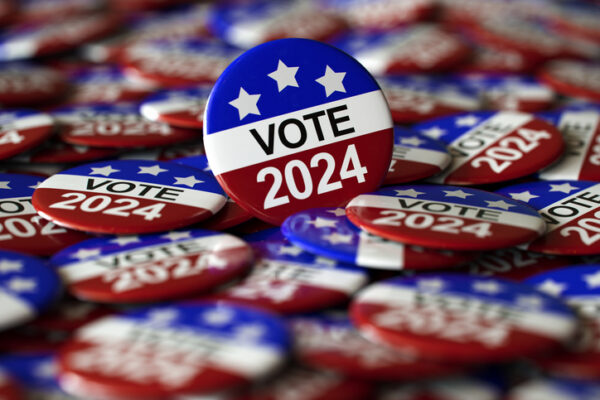
Elections 2024: The Great Unknowns
For the seventh time since 2012, PQ Media is sharing its outlook on political media buying from its election cycle report with RAB members. During a recent presentation, I noted how this election cycle differs significantly from every previous cycle due to a plethora of unanswered questions that still exist. Some of these questions come seven months before the elections, which for this blog I'm calling the Great Unknowns – there are 20. That's how unpredictable this year's election cycle has become in determining how much will be spent by candidates, political action groups (PACs) and advocacy groups promoting or objecting to a ballot referendum.
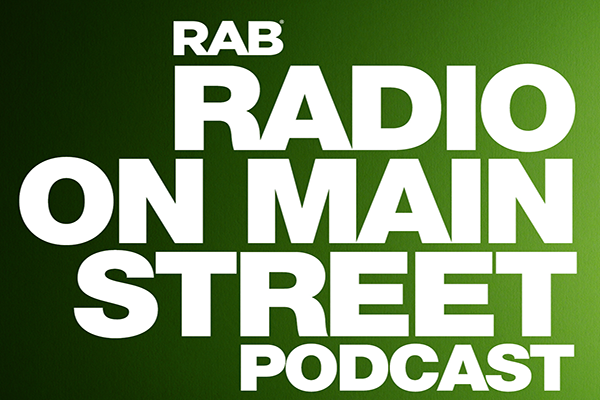
Radio On Main Street featuring Westwood One's Blair Fischer
In the 17th and final episode of this ANA Masters series, Erica Farber chats with Blair Fischer, director of national partnerships at Westwood One to gain her thoughts on her first Masters of Marketing conference. Blair shared so many nuggets of great advice for radio sellers, regardless of whether you are national or local. Have a listen and you'll be energized and reminded how passion for our medium is infectious and ultimately leads to growth. Click here to watch .
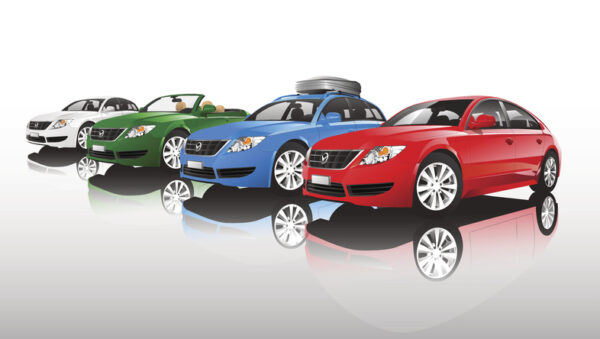
Radio Accelerates Website Traffic for Auto
What a difference a few years make. We have all seen it and experienced it. Although different, business is back from the impact of the pandemic. Shelves are full and automotive dealer lots are full. Automotive has gone from a seller's market to a buyer's market.
2023 RAB Radio Sizzle Video
RAB's Radio Sizzle Video is available for download.
2023 RAB Radio Sizzle Video Part-1
2023 RAB Radio Sizzle Video Part-2
2023 RAB Multicultural Video
NEW - RAB's Multicultural Video is now available for download.
2023 RAB Multicultural Video Part-1
2023 RAB Multicultural Video Part-2
Radio is America's #1 reach medium. Click here and pass it along. Nielsen Audio Today June 2023
Radio drives nearly 5 BILLION weekly brand conversations. More than half of brand conversations among heavy radio listeners result in intent to purchase. RAB and Engagement Labs “Radio Drives Brand Conversations,” 2023
CASE STUDIES
Radio creates brand awareness and drives ROI. Click below to browse the case study library below and see why radio matters to businesses of all shapes and sizes.
Listen to award-winning commercial audio and be inspired by the Radio Mercury Awards.
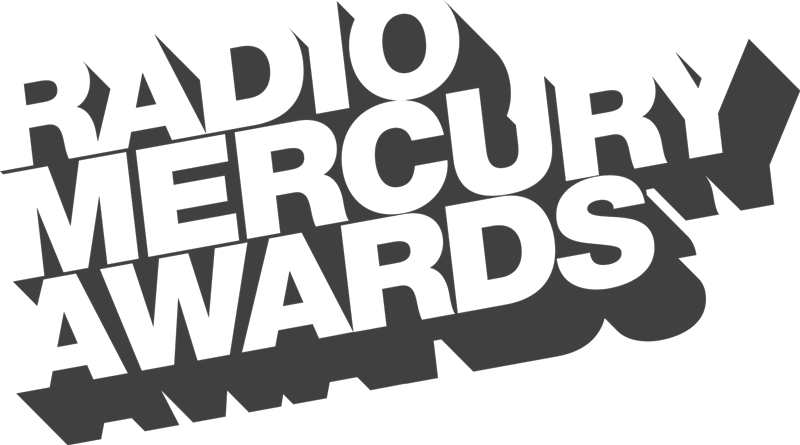
Radio Mercury Awards
The Radio Mercury Awards, the only competition exclusively devoted to radio, was established in 1992 to encourage and reward the development of effective and creative radio commercials. The annual Radio Mercury Awards competition draws entries from advertising agencies, production houses, radio stations, and educational institutions across the country.
MP3 Commercial Audio
RAB's Audio Library contains nearly 1,000 commercials in bright, crisp MP3 format.
These tools are designed to help you understand and use radio effectively. Click below to begin.
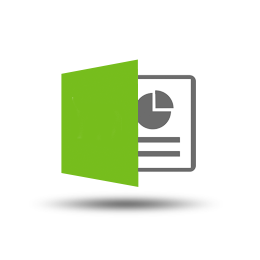
Ad Spending
Every day, advertisers turn to radio to build strong brands and drive sales. Who are the top spenders? Check out Ad Spending data and other resources in this section.
RADIO'S TOP SPENDERS
Choose a profile below
- Top 40 National Network & Spot Advertisers by Parent Company
- Top 40 National Network & Spot Advertisers by Brand
- Top 40 National Network & Spot Advertisers by Industry
- Helpful Links to Other Revenue Resources
Need more help? Ask RAB!
Send Message
800 232 3131
All Rights Reserved. 2024 Radio Advertising Bureau

Case Study: Success Stories of Brands Winning on Radio
Category: <a href="https://commercialsbythedozen.com/category/local-broadcast-radio-advertising-unleashing-the-power-of-community-connection/">local broadcast radio advertising: unleashing the power of community connection</a>.
In the fiercely competitive world of advertising, success stories of brands triumphing on radio serve as a beacon of inspiration. As the landscape continues to evolve, broadcast radio remains an ever-relevant platform, offering unique advantages that pave the way for exceptional marketing achievements. Local radio, in particular, emerges as a game-changer, connecting brands intimately with communities. In this article, we delve into compelling case studies that showcase the value of advertising on broadcast radio and underscore the significance of local radio in driving marketing success.
1. Local Radio Empowering Local Businesses
A local bakery, seeking to expand its customer base, turned to local radio to spread the word about their delectable treats. With tailored ads aired during peak commute times and tied to community events, the bakery saw a remarkable increase in foot traffic. Radio’s hyper-local reach, combined with engaging storytelling, strengthened the bakery’s presence within the neighborhood and fueled exponential growth.
2. Personalized Messaging for Targeted Audiences
A global electronics brand sought to launch its latest smartphone model in various regions. Leveraging broadcast radio, they crafted region-specific ads that spoke directly to the interests and preferences of each demographic. These personalized messages struck a chord with audiences, resulting in a surge of pre-orders and an impressive market penetration for the brand.
3. Amplifying Social Impact Initiatives
A nonprofit organization dedicated to environmental conservation utilized local radio to rally support for their cause. Engaging storytelling and emotional appeals resonated deeply with the community, inspiring listeners to participate in eco-friendly initiatives. Radio’s local influence empowered the organization to mobilize a passionate group of volunteers and drive impactful change.
4. Building Brand Affinity and Recall
A fashion retailer aimed to strengthen brand affinity and boost recall amidst a crowded market. By strategically partnering with a popular local radio personality, they integrated ads seamlessly with entertaining content, resonating with fashion-conscious listeners. This unique approach reinforced the brand’s identity, fostering loyalty and increasing brand recall.
5. Connecting with Local Events
A regional tourism board sought to attract more visitors during the holiday season. Through local radio ads promoting festive events and holiday attractions, they successfully positioned the region as a top destination. Radio’s real-time responsiveness allowed them to update ads with additional offers, further enhancing the campaign’s impact and attracting a surge of tourists.
“Case Study: Success Stories of Brands Winning on Radio” celebrates broadcast radio’s enduring relevance in driving marketing success. Local radio emerges as a potent tool for brands to connect intimately with communities, amplifying impact through personalized messaging and engaging storytelling. From empowering local businesses to mobilizing social impact initiatives, radio’s value extends beyond the airwaves, making it an indispensable ally for brands seeking to resonate deeply with diverse audiences and achieve marketing triumphs that stand the test of time.
- Equipment (2)
- Local Broadcast Radio Advertising: Unleashing the Power of Community Connection (60)
- Production (6)
- Fictional Stories About Real Radio Stations (26)
- Thankful Frequencies: Radio's Influence on Thanksgiving Stories (4)
- The Radio Ripple Effect: Stories of Enduring Inspiration (9)
- Transmissions of Courage: Stories of Veterans (3)
- Asking Questions (1)
- Cold Calling (3)
- Customer Acquisition (3)
- Generating Leads (1)
- Pre-Call Planning (2)
- Prospects (2)
- Target Audience (1)
- Script Writing (2)
- Great North American Eclipse Liner (71)
- Holiday Themed Station Liner (269)
- Station Liner (208)
- Uncategorized (1)
Recent Articles
- The Signal Across Borders
- Frequencies of Change
Harmonies of Change
Tuning into the heartbeat of philly.
- Whispers of Change
In 1961 Schenectady, the Eldridge family and their community experience a historic moment in radio history. Electrical engineer Thomas, his daughter Elizabeth, and her friends celebrate WGFM’s groundbreaking stereo broadcast. Elizabeth is inspired to pursue ballet, while Thomas contemplates his technological legacy and the event strengthens their bonds through the universal language of music.
Popular Microphones In Radio Studios
Discover the iconic microphones that have shaped U.S. radio broadcasting. From the renowned Shure SM7B to the versatile Neumann U87, delve into what makes these microphones the top choices for clarity, noise isolation, and tonal excellence in radio stations across the country. Tune in to the soundscape of radio excellence.
Echoes of Autumn: The First Pitch Through the Airwaves
Echoes of auburn avenue.
In 1950s Atlanta, Laila, an African American girl, was inspired by WERD, the first black-owned radio station. Heroes like “Jack the Rapper” and stories of civil rights struggles ignited her passion for justice. Winning a radio essay contest, she later became a lawyer, her childhood by the radio fueling her fight for equality.
Voices of the Game: The Rise of Joey’s Dream
The frequency of healing, the sound behind the scenes: unveiling the best digital editing software for radio producers.
For broadcast radio producers, the right digital editing software elevates content. Reaper offers detailed routing; Adobe Audition ensures clear, integrated content; Audacity provides budget-friendly, cross-platform accessibility; Apple Logic Pro excels in jingle creation; Avid Pro Tools is an industry favorite. FL Studio, Ableton Live, Cubase, and Studio One also stand out for specialized needs.
Radio Waves of Gratitude: A Soldier’s Heartwarming Homecoming
In “Radio Waves of Gratitude,” follow soldier Lucas as he returns home to Willowbrook during the enchanting month of October. Amidst the Harvest Festival preparations, a radio station becomes his sanctuary. Through heartfelt broadcasts, Lucas discovers the transformative power of love, understanding, and the bonds that heal. An emotionally resonant tale celebrating the resilience of our soldiers.
Waves of Change
On August 28, 1963, Atlanta’s WERD Radio Station, a hub for jazz and R&B, broadcast Martin Luther King Jr.’s ‘I Have a Dream’ speech. Ella Mae Johnson, a seasoned director, and Thomas Booker, an aspiring radio journalist, realized the gravity of the moment. Their broadcast marked a turning point, as WERD evolved into a voice for the Civil Rights Movement, transforming the station into a platform for change and discussion, a testament to the power of media in the fight for equality.
- Zimmer’s Process
- Zimmer Digital Solutions
- Community Involvement
- Success Stories
- Newstalk KZRG
- Kissin 92.5
- Classic Hits 93.9
- Big Dog 97.9
- Radio Advertising
- Digital Advertising Solutions
- Website Design
- Digital Promotions
- Social Media Management
- Recruitment Services
- 21 52 Advertising Plan
- Bricks and Mortar
- Recruitment eBook
Four States Small Business Blog
Radio advertising case study: windows and more.
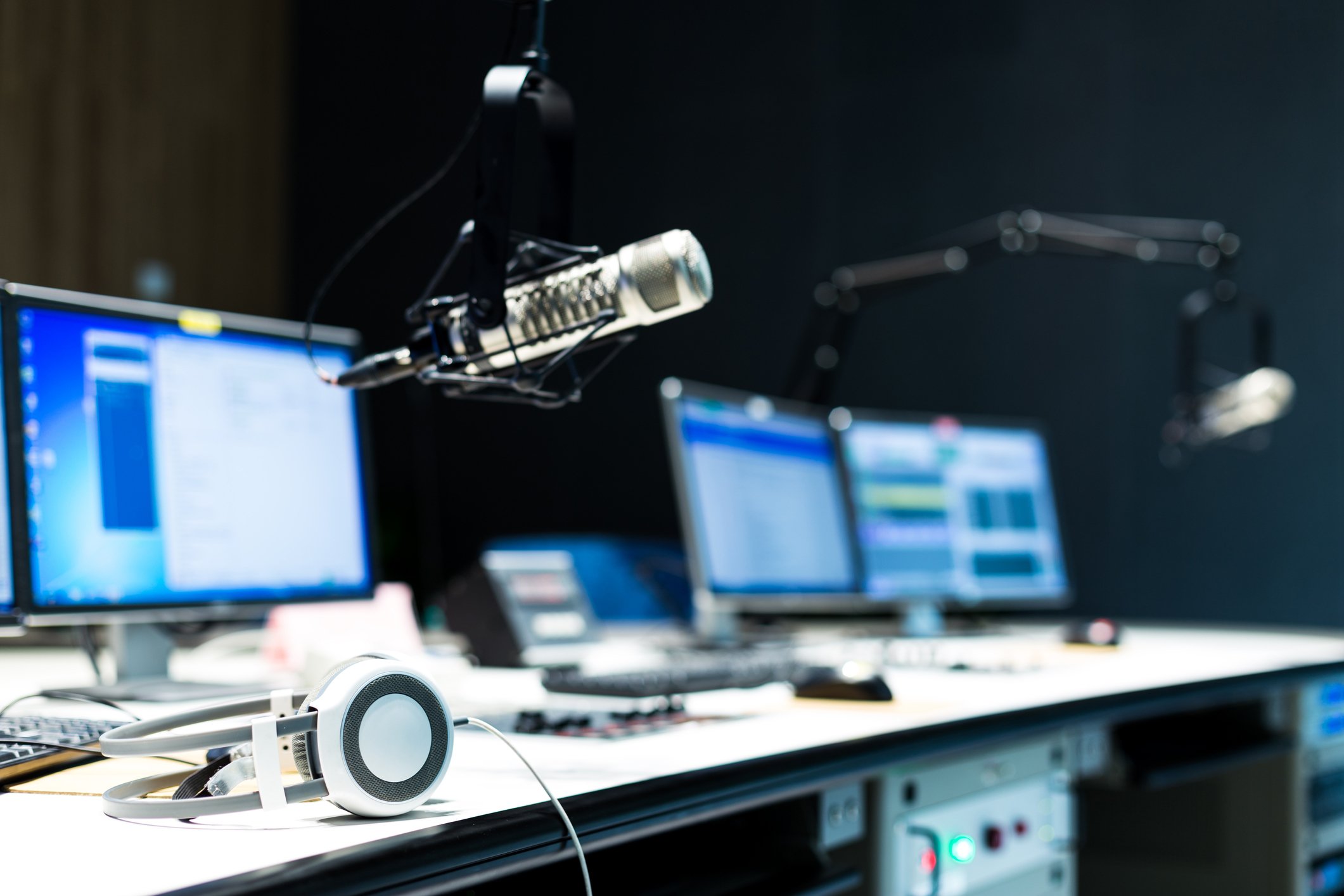
Every once in a while, we like to feature a branding client at Zimmer Marketing. We feel that these real-world case studies put a face to the concepts behind branding and offer useful ideas for other small business owners in their quests for brand success. One of our most successful radio advertising campaigns in the last few years has been for Windows and More . And this week, we'll showcase some of their radio spots and provide some insights into making successful radio branding campaigns.
Radio Branding for Windows and More
Before commenting on them further, let's listen to some recent radio ads for Windows and More.
Branding Elements
What are branding elements, and how are they used in these radio ads? Put simply, the branding elements are those features of the ads that remain consistent in each. For Windows and More, the following are all branding elements:
In each of the radio ads, you will notice that the background music is the same. This upbeat but non-distracting music serves more than just to set the mood. People remember what they hear. And, in this case, people come to associate that music with Windows and More. With enough repetition, radio listeners only need to hear the music, and they think of Windows and More.
These ads begin in various ways, usually with a skit or story, but always end with the consistent, familiar, and authentic voice of the owners of Windows and More.
The final branding element in these ads is the slogan: "Never settle for less. The choice is clearly Windows and More." The slogan allows Windows and More to package their primary message in a memorable way, which they have become known for with consistent advertising.
Storytelling in Radio Advertising
One of the most important parts of radio advertising, or any advertising, is storytelling. Want we want to do when creating an ad is to begin with an interesting, relatable, and entertaining story. In these ads for Windows and More, storytelling is always the starting place. We want to capture the attention of and entertain the listener, so the main message of each ad sticks in the hearts and minds of the audience.
Award-Winning Radio Advertising from Zimmer Marketing
One of the ads for Windows and More, "Sagging," earned Zimmer Marketing a second-place award from the Kansas Association of Broadcasters in 2020. This and other radio branding projects continue to make Zimmer Marketing the best marketing and branding company in the four states.
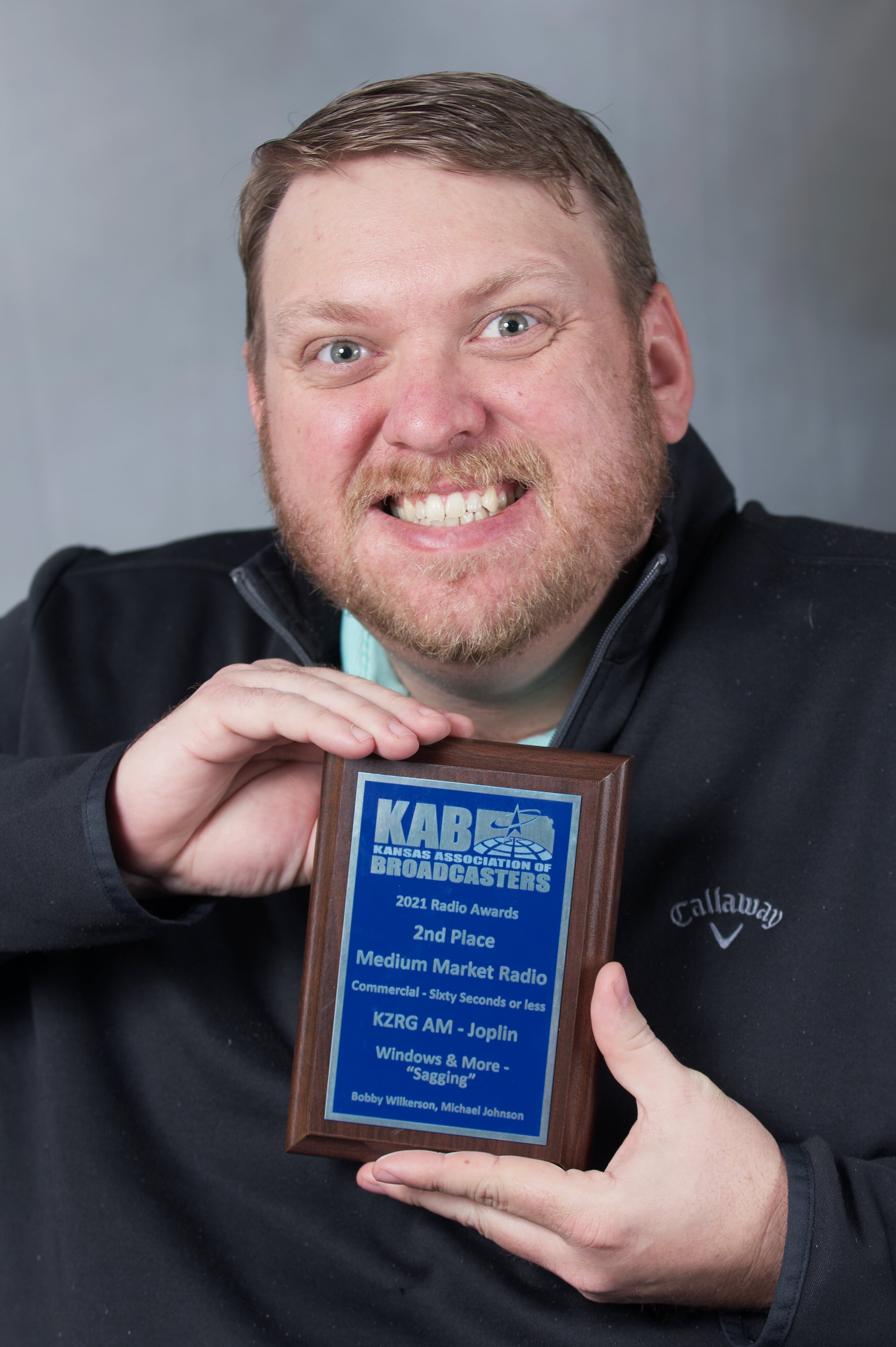
Build Your Brand with Help from Zimmer Marketing
Are you ready to follow the lead of Windows and More and create a branding campaign that will grow your business for years to come? At Zimmer Marketing, we've helped countless businesses in the four states secure an expanding market share and make their mark on the Joplin area. Get started on your radio advertising journey today!
Topics: Radio Advertising , Branding
Welcome to the Four States Small Business Blog!
We're glad you're here. .
We’ve created this online space to provide the latest marketing trends, news, and best practices to small business owners and marketing professionals in Joplin, Missouri, and the surrounding Four States Area.
Subscribe to Our Weekly Newsletter
Posts by topic.
- Marketing Strategy (195)
- Radio Advertising (110)
- Digital Marketing (99)
- Marketing ROI (51)
- Website Design (46)
- Team Zimmer (42)
- Joplin Market (40)
- Branding (39)
- Integrated Marketing (39)
- Small Business Resources (38)
- BrandsFormation (30)
- Advertising Creative (19)
- Advertising (18)
- Health/Medical (18)
- Consumer Behavior (17)
- Home Improvement (15)
- Recruitment (12)
- Social Media (11)
- E-commerce (7)
- Zimmer Cares (6)
- Jingles (5)
- Agriculture (4)
- Online Sales (4)
- Video Production (4)
- Case Studies (2)
- Casinos (2)
- Company Culture (2)
- Government (2)
- Restaurants (2)
- Education (1)
- Jingle Workshop (1)
Recent Posts
Contact info.
Phone: 417-624-1025
Fax: 417-781-6842
Email: Email
- Zimmer Success Stories

The Power of Sound: How Radio Advertising Drives Brand Awareness
How you can grow awareness of your brand through a radio advertising campaign.
In an era dominated by digital media, radio advertising continues to hold immense power in growing brand awareness. Imagine captivating millions of listeners with your brand’s message, reaching diverse audiences, and leaving a lasting impression. Radio advertising offers the unique ability to cut through the noise and connect with people on a personal level.
In the vast and competitive landscape of marketing, brand awareness stands as a foundation for customer loyalty, trust, and recognition. When people recognize and recall your brand effortlessly, they are more likely to choose your products and services over your competition. A strong brand presence ensures you are at the forefront of your customer’s minds.
Radio advertising offers a formidable tool for driving brand awareness to your audience. By harnessing the power of sound, storytelling, and human connection, radio campaigns create a lasting impact. Explore the benefits of using this powerful tool for your company and expanding your reach. Delve into the world of radio advertising and discover its potential for growing brand awareness.
Understanding Radio Advertising
Radio advertising refers to the circulation of promotional messages and brand information over radio broadcasts. With its focus on sound, radio advertising captures attention and creates a memorable brand experience through carefully crafted sounds, jingles, and voiceovers. The medium offers several advantages as an advertising medium to help create brand awareness.
Firstly, radio has a wide reach, with millions of people tuning in daily, making it capable of engaging diverse demographics, age groups, and geographic locations. Additionally, radio stations cater to multiple target audiences, allowing advertisers to align with stations specific to their market. This enables precise audience targeting, often with a local focus for a strong local presence to connect with their immediate communities.
Current relevant statistics and research support the effectiveness of radio advertising. For instance, Nielsen found that radio ads reach 92 percent of adults nationwide each week, an extensive reach! In addition, radio advertising evokes emotional engagement, as reported by nearly seventy percent of listeners. With the research and statistics, it’s easy to see how effective communication via radio broadcast works as a form of advertisement.
The Psychology of Sound
Sounds deeply influence human emotions and memory through subconscious processing, which can evoke immediate emotional responses. Certain sounds can trigger specific emotions or memories to shape a person’s perceptions and behaviors, which advertisers can leverage to create sounds that will resonate with their audience. Going further, audio storytelling utilizes sound effects, voice acting, and narration to captivate listeners and create a profound connection.
Sounds can evoke empathy, build brand affinity, and convey messages in a memorable way. Jingles, slogans, or brand sounds become synonymous with the brand and instantly trigger recognition with a brand creating loyalty and presence. By employing these audio techniques, your brand can win their way into the memories of your audience and create lasting impressions that differentiate you in the marketplace.
Leveraging Radio Advertising for Brand Awareness
Radio advertising offers precise audience targeting capabilities based on various factors to craft attention-grabbing and memorable radio ads. These are crucial for building brand awareness by utilizing storytelling techniques, engaging voice talent, and sound effects. Leaving a lasting impression on your audience while creating consistency and frequency reinforces brand identity, message recall, and a cohesive brand experience.
By leveraging these strategies, advertisers can effectively reach their target audience, boost brand awareness, and foster lasting connections with their customers. Radio advertising has the power to elevate a brand’s presence and improve success. By partnering with other methods of advertising, radio ads help to fill in the gap and create pockets of memory, serving as a powerful extension to marketing plans.
Case Studies
Case studies of successful radio advertising campaigns highlight the effectiveness of this medium in driving brand awareness. For example, McDonald’s has instant brand recognition over the radio as soon as customers hear their signature slogan, “I’m loving it!” The ad has swept through so many homes and cars they no longer need to say the company if they use this slogan. It’s even used in memes solidifying customer recognition.
Measuring Brand Awareness in Radio Advertising
Measuring brand awareness in radio advertising campaigns involves various metrics and methods. Brand recall assesses the ability of listeners to remember and recognize a brand, while ad awareness determines if listeners can recall hearing a specific radio ad. Reach and frequency measure the total number of listeners reached per ad, while online engagement metrics indicate the brand’s visibility and interest.
Tracking and analyzing data from radio campaigns is crucial for future efforts in advertising. It provides insights into the effectiveness of ads, helps refine targeting and creative elements, and maximizes your investment. Data analysis identifies successful strategies, informs data-driven decisions, and measures cost-effectiveness. Advertisers can enhance brand awareness by leveraging data-driven insights for better results and campaigns.
Launch a radio advertising campaign today with Hybrid Media
As you can see, radio advertising can help to grow brand awareness through wide reach, targeting capabilities, and the power of sound in creating emotional connections and lasting impressions. By crafting memorable ads, maintaining consistency, and integrating radio with other channels, you can create an effective marketing strategy for your demographics.
Sound plays a crucial role in building brand awareness, and radio advertising allows businesses to utilize storytelling and other dynamic elements to create strong associations with brands. Radio ads engage listeners while leaving a lasting impression that drives recognition and recall. If you are looking to boost your brand awareness, consider adding radio advertising to your strategy.
With Hybrid Media’s expertise, you can launch a radio campaign that connects with your target audience and amplifies your brand. Do not miss the opportunity to make a lasting impact – contact us today and let your brand be heard through the power of radio advertising. Together we will introduce you to the world.
At Hybrid Media, we purchase millions of dollars of low-cost media each week, resulting in significant savings for all of our clients.
Contact us today to find out how much you can save by working with the radio advertising experts at Hybrid Media to create and run your national radio campaign.
Recent Blog Posts

The Ultimate Guide To Pandora Advertising For Beginners
Pandora advertising emerges as a potent channel for brands aiming to captivate and engage a vast audience through the power

The Power Of Host-Read Ads For Podcast Advertising
The authenticity and personal connection offered by host-read ads in podcast advertising stand out as a well-loved option for advertisers

The Average Cost To Advertise On Pandora Radio
Online radio advertising has emerged as a potent channel for reaching targeted audiences, paving the way to various platforms for

Spotify Vs. SiriusXM: Which Is Best For Your Business Advertising?
In today’s digital age, the debate between Spotify vs SiriusXM for business advertising is more relevant than ever. Both platforms

Spotify Vs. Pandora: Which Platform Is Right For Your Advertising?
Music streaming services like Spotify and Pandora have emerged as powerful platforms for advertisers looking to connect with targeted audiences.

Pros And Cons Of Radio Advertising You Should Know
Digital platforms are often seen as the go-to for marketing strategies these days, but traditional mediums like radio hold a

Mastering Your Strategy: SiriusXM Advertising Rates Explained
Satellite radio stands out as a unique medium for reaching a diverse and engaged audience. It is good to note

How Radio Advertising Can Benefit Your B2B Campaign
Business-to-business (B2B) marketing has expanded its reach and finding channels that offer meaningful engagement with decision-makers is paramount. While digital

Exploring The Next Wave Of Audio Advertising Trends In 2024
As we look ahead to 2024, audio advertising will definitely continue leading the charge as one of the most dynamic
Radio Advertising Services
Direct response advertising, siriusxm advertising, talk radio advertising, fm radio advertising, radio advertising, podcast advertising, local radio advertising, spotify advertising, remnant radio advertising, sports radio advertising, national radio advertising, east coast radio advertising, iheart radio advertising, pandora advertising, audacy advertising, radio advertising locations, atlanta radio advertising, boston radio advertising, chicago radio advertising, dallas radio advertising, miami radio advertising, minneapolis radio advertising, new york radio advertising, philadelphia radio advertising, phoenix radio advertising, san diego radio advertising, san francisco radio advertising, washington dc radio advertising.

- OUR PRODUCTS
Radio Advertising
Why radio advertising, february 16, 2022.

Radio provides reach , with 89% of UK adults tuning in each week; resonance , as an emotional influencer with the power to enhance brand perceptions at a subconscious level; and results , delivering an average ROI of £7.70 for every pound spent.
Ad avoidance for radio is the lowest out of all mediums, making it a stand out choice for those looking to cut through the noise to reach their customers effectively. And, radio has always had the contextual edge, being consumed in and around other activities and habits.
Research conducted by Differentology revealed, brands like McDonald's, Heinz and Deliveroo saw a sales uplift of 51% when they focused on targeting their customers when they were engaged in relevant activities. Meaning radio is a great choice for growth-minded marketers.
Speaking technically, r adio is a reach medium with universal appeal, targeting an attentive and captive audience. Listeners have a strong emotional connection with their chosen station, which reflects positively on radio advertising. It provides information as it reaches consumers closest to their time of purchase, as they drive to or from work, or even during a lunch break.
Radio advertising has inherent persuasive strengths which subconsciously build trust, purchase intent, and personal cues.

Like with all advertising mediums, the reasons why it's deemed effective can vary from campaign to campaign, but there are some clear benefits to advertising on radio that stand head and shoulders above the rest.
The following reasons should start to shed light on why you should choose radio for your advertising. Let's dive in.
1. Radio is cost-effective
Running low cost, low risk but high impact advertising is what we all aim for. getting there is another thing altogether. the good news is that on average brands using radio get their money back nearly eight times over at £7.70*. couple that with lower production costs and you're on to a winner. .
* Source: Radiocentre’s: Radio for growing ROI
When it comes to actually creating your ads you have to not only factor in the cost of the airtime or space on the page, you also have to consider the cost of producing the creative.
From a 60 second TV ad with a full cast and crew, to a microphone, a voice actor and a sound designer - it's vitally important that you get creative that carries your message to your customers with originality, empathy and creativity.
But, for most, our imaginations run up a hefty bill.
Dreams of a sprawling cast, original soundtrack and beautifully colourised cinematography come to mind only to be crushed by the weight of the inevitable invoice.
But with radio, you can have your dream ad without running up a hefty creative bill. All you need is the right script and an excellent sound designer to bring alive the theatre of the mind.
This is reflected in the evidence, with many advertisers believing that you can have a cost-effective advertising campaign with radio. Just take a look at the results of the Re-evaluating Media study from Ebiquity:
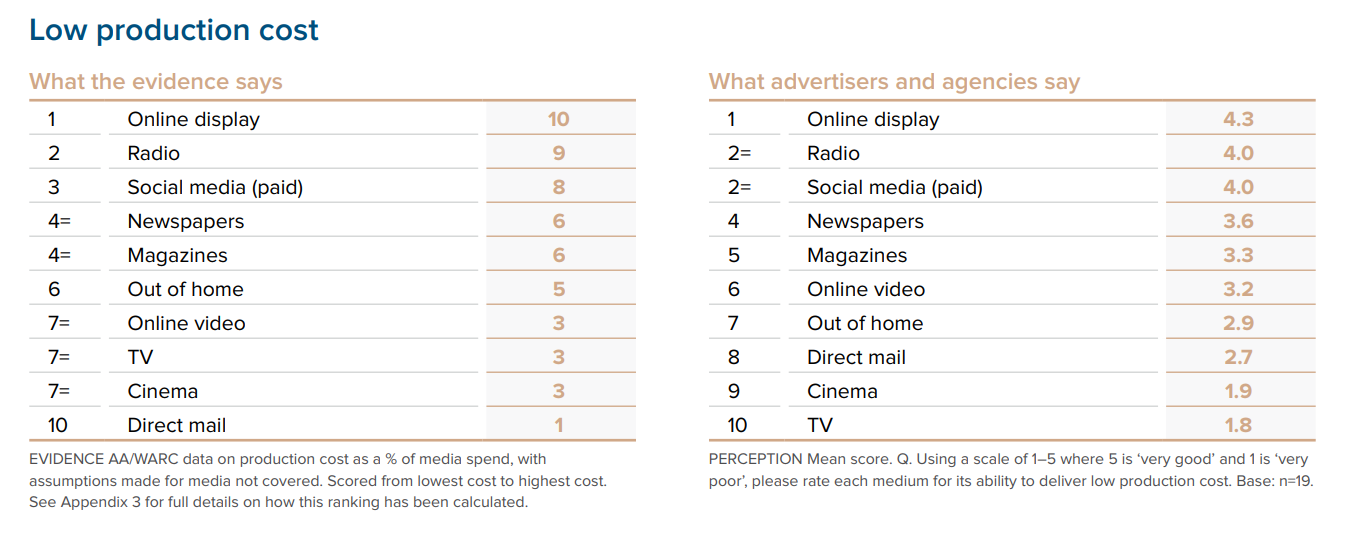
But, some critics remain. There is no way that an audio ad can be as effective as a visual one, right..?
The psychological benefits of music and audio are well documented. It's been found to improve moods when shopping, leading to overall average expenditure.
Advertisers can also use the familiarity of a popular song to incite a specific reaction in viewers that aligns with the objective of their ad. Powerful songs can evoke strong emotional responses, and songs can help create a soundtrack to the events unfolding in an ad when lyrics are integrated into the voice-over and storyline.

But while it’s important that ads resonate with viewers, advertisers want their messages to drive sales, especially with the large price tags that can come with using popular music. However, the good news is that popular songs (and artists) deliver a one-two punch: They boost emotive power and can drive significant returns.
Slower paced songs have even been attributed to improved memory. Remember that the next time you're thinking about your radio creative.
The benefits of using a well-known, and probably very expensive, bit of music was twofold:
- People already know it and begin to draw associations almost immediately. People will also have their own experiences with the song and will carry over those thoughts and feelings. (Which can have positive and negative effects.)
- They were able to adapt the popular song to suit the shorter, punchier format of an advert. (And play around with manipulative elements of music theory)
And of course, good quality music won't ever come without a cost. That's where royalties come in and luckily there are plenty of ways to get the music you want while keeping the cost down.
This extends to the choice of voice. When a lot of adverts rely on voice over to deliver important bits of information, you need to make sure that your voice is both consistent with creativity and context.
Payment Options
Radio advertising also has a wealth of flexible payment options to help curb the costs.
These payment plans usually come in the form of 12 months, brand building campaigns that are designed to spread the cost of production and airtime over a long period of time. As it works, you'll slowly be building a share of mind with the listeners of your chosen station.
Our WOW packages only come round at the start of the financial year but if it sounds like something you'd be interested in, you can contact a member of our team below:

Valuing Radio
The All-Party Parliamentary Group on Commercial Radio report: Valuing Radio reveals information that would be of interest to advertisers up and down the country.
This information is particularly relevant for SMEs looking to expand their business.
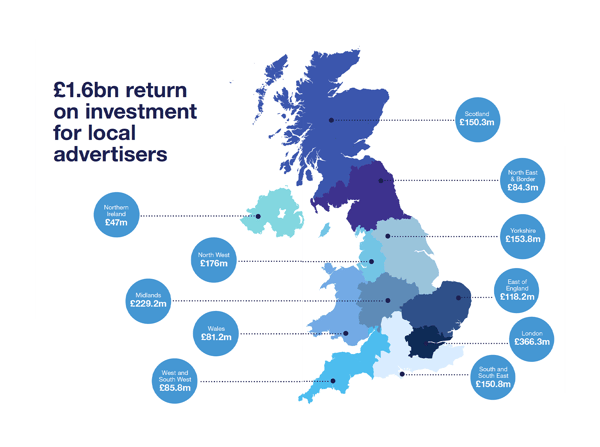
Radiocentre’s regional ROI analysis is based on local advertising revenue and underpinned by Radiocentre’s ROI multiplier research, which shows that brands using commercial radio in the UK get their money back 7.7 times on average and, in many sectors, radio offers the best ROI of any media.

2. Radio targets the right people at the right times
It's important you get your targeting right and thankfully radio has plenty of strategies (some unique to the medium) for targeting your customers when they're most likely to be thinking about a purchase. .
Reaching the most receptive of any audience isn't an easy prospect, it's been that way for a long time.
Back in the 50's people were targeted based on their job role. In the 80s it was about where they lived. In the 90s, we targeted based on what they bought. These insights were gained through hard-fought censuses or surveys. Either way, they were static and didn't reflect the lives we lead.
Until now, we’ve been thinking about what the demographic characteristics of a person can tell us about who that person is and what they might purchase; for instance, if they live in a certain area, are of a certain age and do a certain job, we might be able to deduce that they like foreign holidays. However, this is simply a "propensity", meaning they are twice as likely to engage with foreign holidays, based on results modelled from a survey base, measured in tens of thousands.
Now, with new data sets such as social data, we already know that certain people like foreign holidays before we’ve even tried to figure out where they live or what else they do. By adding that information, we can then complete the picture on who a customer is, how best to communicate with them and what channel to use to do so.
In short, instead of targeting using demographics, we need to target using what actually matters: people’s passions, motivations and mindsets. We need to target like radio has been since its inception - based on interest, passion and love.
Different stations carry different interests and, as a result, different audiences. Going one step further, the shows on those stations specialise even more - with certain presenters and personalities garnering niche interests and passions.
But what does that mean to you and your brand?
Simply put, it means you can target your customers more specifically and more easily on radio.
Moreover, radio makes effective use of what those in the industry call touchpoints.
Touchpoints are certain times in the day when your customers are engaged in an activity.
Common touchpoints include the always adored school run, morning/evening work out and work time. These are times when your customers are primed for brand messages but cannot be reached directly through any other medium other than radio.
Working with a radio station gives you access to this audience data so you can work on tailoring a message to these touchpoints which, in turn, will generate more qualified leads and sales.
But, if you're going to target people at the times they're engaged, with radio you can create a message that takes advantage of this knowledge through context...
Radio delivers on context in a few important ways:
Strategic Planning
You’re probably reading this with a pretty good idea of when you would want your advertisements to run. Nine times out of ten, however, advertisers jump at the wrong times.
Drive time and breakfast are massively popular on radio stations and are always overbooked, but that doesn’t automatically mean it’s the best for your business. You need to think about your brand, your customers and what they’re doing at certain times in the day.
If that sounds like a lot, don’t worry, every radio station will have Planners who are specifically briefed to find you the time bands that will get you the best response.
Smooth Radio North West’s Planner shared some of the most common mistakes made by advertisers on radio in terms of planning spots and airtime:
Strategic planning, like most advertising, starts from having a decent brief and a clear understanding of your customers. Work on clearly defining those audiences so we can find the perfect spot for your ad to play on.
Sponsorships
Down to the emotional connection and relationship between listener and station, competitions, phone-ins, text ins and other listener engagement activities have a massive impact on radio. The impact far out-shoots other traditional media and, with the combination of digital and radio, this is only improving over time.
A sponsorship works in a similar way to regular air-time promotions, but instead of playing between other ads in a slot, you get to be the champion for a specific segment on radio. This could be a competition, a giveaway or a specific show like the weather, news or a particular host’s show.
Sponsorships like these that are massively popular with a very distinct listenership give you a chance to get contextual advertising perfect.
Each segment that you can sponsor has its own specific tone and content which you can follow according to your objectives.
Advertisers looking to drive sales to their music event have sponsored some of our most popular hits shows. Legal and law firms have sponsored the news and so on.
For a slightly more subversive example, following the weather with sponsorship for a travel agent would be a sound decision. Imagine if you had a great deal for sunny breaks away and knew that you needed to target work-weary adults who were thinking about a break. Hitting them after they’ve just heard the bleak weather report and are thinking about how rubbish the weather is is a great use of context-based advertising.

Delivering Relevance at Scale
Going to broad and not targeting can lead to problems. What many either don’t seem to know or don’t seem to acknowledge is that targeting too specifically can get you into an equally as tricky situation.
What you need is relevance on a scale that matters. Context, not just for a couple of hundred people, but for hundreds of thousands.
Radio provides that relevance at scale.
Browse our stations here:

3. Radio advertising builds your brand and changes perceptions
Brand building is the main driver of long-term growth and involves the creation of memory structures that prime consumers to want to choose the brand. Without brand strengthening, growth will be weaker, activation will be weaker, pricing power will not improve and profitability growth will be severely reduced
The IPA's Les Binet and Peter Field outlined a user manual for building a brand.
They outlined that:
"Brand building is the main driver of long-term growth and involves the creation of memory structures that prime consumers to want to choose the brand. Without brand strengthening, growth will be weaker, activation will be weaker, pricing power will not improve and profitability growth will be severely reduced."
Likewise, it was made clear that long-term, brand-building campaigns need to do three things:
- Reach a wide audience
- Make an emotional connection
- Create brand fame
It's in these 3 core brand-building elements that radio advertising lays it's foundations.
Radio delivers a combined audience of 49.5 million , a massive stake in the highly fragmented media audiences.
Emotional Connection
As for the emotional connection, Radio turns to music - something we all find a connection with.
The psychological benefits of music and audio are well documented. It's been found to improve moods when shopping, leading to higher than average overall expenditure.
Advertisers can also use the familiarity of a popular song to incite a specific reaction in listeners that aligns with the objective of their ad. Powerful songs can evoke strong emotional responses, and songs can help create a soundtrack to the events unfolding in an ad when lyrics are integrated into the voice-over and storyline.
"Using well-known music is like using the world’s best shortcut. It gets a client on level three almost immediately. You’re quickly getting them to the level of trust, commercial responsibility and actionability that can take years of standard outreach."
- Creative Account Manager, Steffen Armstrong
But while it’s important that ads resonate with listeners, advertisers want their messages to drive sales, especially with the large price tags that can come with using popular music. However, the good news is that popular songs (and artists) deliver a one-two punch: They boost emotive power and can drive significant returns.
One of radio's enduring strengths is that you can listen while doing something else. But with this comes a heightened need to have clear, stand out creative... (According to IPA Touchpoints ; 92% of listening is done while listeners are engaged in another activity.) with that in mind you need to be much more efficient with your creative on radio than you would have to be with other traditional advertising mediums.
If you really want to hear what good radio creative sounds like, then you'll want to check out our Radio Advert Archive , where we've been building up a bank of the best (and worst) radio adverts currently airing, along with the thoughts from our own creatives (the guys who write the ads).
Creating Brand Frame
Radio is effective at driving a high share of voice/share of mind for a brand on budgets that would have limited impact within other media.
This amplifies brand fame: analysis of the IPA Databank reveals that including radio as part of the mix significantly increases the chance of achieving brand fame, as the chart below shows.

4. Radio advertising for sales activation
Radio offers short lead times
As mentioned above, radio is the holy grail of cost-effective advertising. You get many more impacts for your money than you would with something like TV.
When you need increased footfall and quick wins, you need to put yourself out there.
Radio provides, on average, the lowest ‘cost per thousand (customers)’ of all traditional advertising. Likewise, radio also offers low cost production values for your advert – bringing that dream advert idea closer to life and closer to the budget.
What’s the point of driving sales and increasing footfall if you’re spending most of your return on advertising? Stick with radio, the cost-effective way to drive footfall and sales response.
Assured ROI
Radiocentre found an incremental return of £7.70 for every £1 spent on radio, which is a great return on your investment.
Trust in radio, is the only traditional medium that continues to grow.
In Q4 2021 radio took £718.7 million in ad revenue in 2021, breaking the previous record of £713.6m in 2018.
This represents 25% growth year-on-year vs. a pandemic-hit 2020.
Radio Provides an Experience
Think of the way radio is delivered. It’s focused on the relationship between broadcast and listener. It’s intimate, exclusive and action-based. Your customers will be called to take a specific action.
An advert that addresses customers directly will not only generate more responses, but will capture the customers who are ready to buy.
Similarly, radio advertising backs up a strong call to action with creative that sells.
If you need help building a message that can drive footfall and sales, we’d be happy to help. Just click the button below to get started with radio.
Listening keeps growing
Radiocentre’s research project Audio Now explored the position of different audio services in people’s lives today. The study established that the demand for audio is increasing due to the pressure of modern life, with people using audio to help them cope. But audio doesn’t just fulfil one need: the research identified six different need-states where audio played a role.
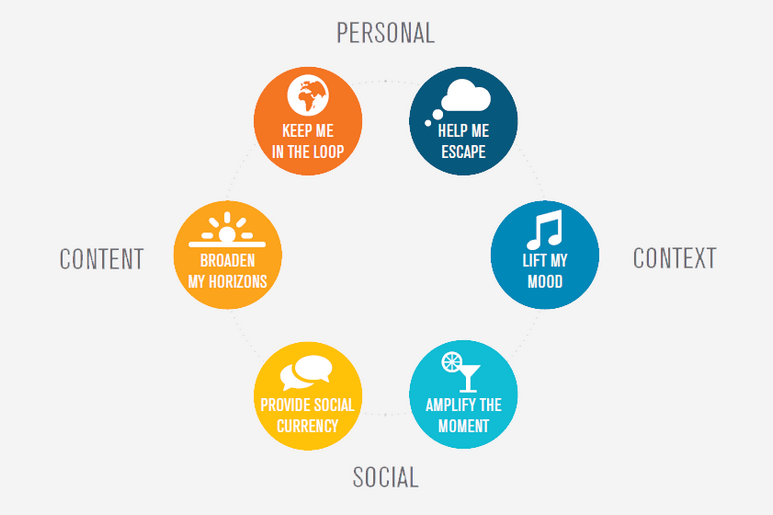
But with the introduction and proliferation of on-demand audio services like Spotify, Apple Music or Amazon, questions have been raised about Radio's future. Despite these questions, on-demand audio has become the yin to live radio's yang.
The different characteristics of live radio and on-demand audio mean that they are suited to different need-states and play complementary roles in the listener’s life.
Live radio is unique because it offers human voice and human choice and retains the ability to surprise. Radio also connects us to the outside world – both by keeping us in the loop and by providing a reason to talk to the people around us. What makes on-demand audio services different is the potential to listen – at least in theory – to anything. It offers control and instant gratification and the ability for a more immersive, focused music experience. While radio can help people feel connected to the wider world, on-demand help connects them to their world: be it, friends, with similar tastes or people they share playlists with.
Emotional Multiplier
Amongst other things, people use media to make themselves feel better and when Radio is done right, it has the biggest emotional multiplier effect on your customers than any other advertising medium.
Radiocentre's study 'Radio: The Emotional Multiplier' found that:
Media consumption has a significant positive effect on people's mood When the respondents reported their media usage and their perceived levels of happiness and energy across the week, there is a clear correlation: people who were consuming media had higher scores for both energy and happiness.
Radio has the biggest influence on people’s Happiness and Energy and on more occasions, radio is the highest scoring medium (compared to TV and online) for increasing both energy and happiness. This is true across all days of the week and almost all times of the day.
This radio editorial effect is proven to enhance engagement with advertising EEG tests in the lab confirm that radio stimulates positive engagement activity in the brain. They also confirm that when ads are preceded by radio editorial, levels of positive engagement are sustained throughout the ad break.
But just being on radio won't be enough for you to tug at your customer's heartstrings and compel them to take an action.
Radio is the perfect platform to showcase writing talent. A well-constructed script can pack a real punch and make your ad stand out in a busy ad break. Although there is no one way to approach a radio script, here are some things to consider as you get started:
- Know your spot length. Before you start, be very clear on how much time you have to play with, including any ‘legal’ copy you may be required to include.
- Keep it simple. Be single-minded. Don’t expect your listener to remember complex detail. The ‘tennis ball analogy’ holds true.
- How does your brand speak? Are there any distinctive words, phrases or a distinctive way of speaking synonymous with the brand? If so, you should use them or write in a way that compliments them.
- Don’t overwrite your ad. With radio, you can communicate powerfully with very few words. Silence and a few carefully chosen words can create real impact and make your message easier to recall. That said, a more complex script can reward repeat listening if it’s well-written and well-judged – provided the commercial message remains clear.
- Avoid the clichés. Radio can be a best-bed of tired creative conventions. (‘This is the sound of….’, the presenter spoof, ‘The blah-blah sale is NOW ON..’ etc.) Make sure your spot is distinctive and avoid becoming audio wallpaper.
Radio advertising case studies
The proof for radio advertising effectiveness lies very much in the pudding.
Below you'll find a collection of radio advertising case studies that explore radio impact on a range of key advertising metrics:

British Airways - Online Ticket Sales
What Happened?
From the beginning of 2009, British Airways (BA) ran a tactical leisure airtime campaign designed to stimulate immediate web traffic and sales. With a greater impetus on driving short term metrics in tough market conditions, BA was keen to get a better understanding of how radio could drive people online to the ba.com website and ultimately deliver sales. Additionally BA wanted to learn more about how their radio creative could improve effectiveness scores going forward.
Results:
The BA radio campaign ran from late December 2008 to the end of January 2009 in London and the South East. BA used a variety of executions to highlight the different places that they fly to and the must dos for each destination. The ad's aimed to whet the listener's appetite for places such as New York, Orlando, and Pisa; and drive people to ba.com for more details.
Results demonstrate the important role radio played in increasing top of mind awareness (ad awareness more than doubled) as well as positive perceptions of BA at an important time for online travel searches and ticket sales. This resulted in radio successfully achieving BA's core business goals for the campaign of increasing traffic to the BA website and stimulating online ticket purchases, further proof of radio's ability to influence consumers at all stages of the purchase funnel.

AA - On the Roads
The AA were looking to show their target audience that they will do whatever it takes to keep their show on the road. They knew the role for breakdown cover needed to change from a focus on urgency to utility, showing the AA understands their lives as drivers.
Why was radio used?
To make their new brand campaign a success, the AA set out to maximise reach of their target audience, ensure high levels of cut-through and stimulate an emotional response. As part of a multi-media campaign featuring TV and outdoor, radio helped extend the overall reach of the campaign. More crucially, radio allowed the AA to take the message out of the living room into the car and emotionally engage potential customers across the day.

It's estimated that up to 25% of cars on the road have a chipped windscreen and, crucially, most people don't do anything about it until it's too late. Once it turns into a crack the whole windscreen needs replacing, which costs the motorist a lot of time and money. So Autoglass needed to start a conversation directly with the motorist about the benefits of calling Autoglass when they first get a chip. Repairing a chip is usually free if they have fully comp insurance, and only takes around 25 minutes to complete.
In this particular case you're dealing with something people usually try to avoid and put off for as long as possible. They wouldn't go online to research it, they wouldn't talk about it or read about it. Instead, Radio's strength here was in it's about to reaching out where it mattered the most: in the car where the problem was most obvious.
The radio campaign was tested in three different regions to allow for the optimum laydown to be identified in combination with enhanced web presence.
Download our Why Radio infographic here :
Hbspt.cta._relativeurls=true;hbspt.cta.load(3803348, '95909575-9b44-4e75-84cf-f36094b494ce', {"usenewloader":"true","region":"na1"});.

Is Radio Advertising Still an Effective Strategy?
With the rise of streaming services, podcasts and social media marketing , radio advertising can sometimes feel like a relic from another era in today's digital world. It begs the question: do radio ads still pack a punch for businesses in 2024?
As TV commercials become flashier, online ads more targeted and social media marketing ubiquitous, traditional broadcast radio has been further disrupted by the dawn of podcasting and streaming services.
However, despite all this change to the media landscape, it would be unwise to write off radio advertising. Radio can still reach massive audiences, offers cost-effective opportunities for small businesses, and can provide creativity that connects with listeners.
This feature examines where radio advertising stands right now – its reach, costs, creative potential, and measurable impact.
It will explore the pros of using radio ads in the modern marketing mix and some cons. It looks at effectiveness research compared with other platforms.
While not culturally quite so dominant as it once was, could marketers' readiness to dismiss radio prove premature?
Table of Contents

Advantages of Radio Advertising
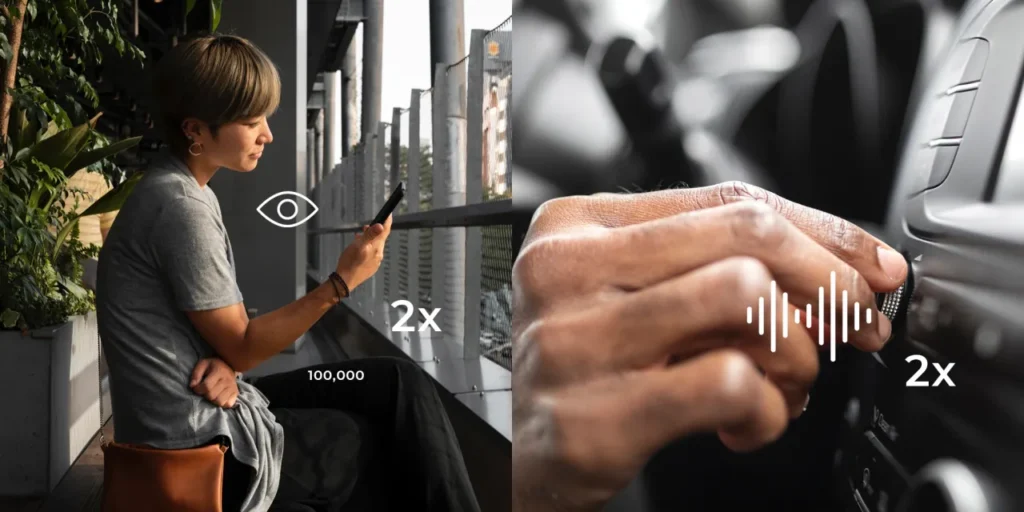
Radio advertising offers several compelling advantages if you want to reach a broad audience. One of the biggest is sheer reach: AM/FM radio dominates the overall Share of Ear —adults 18+'s time spent with audio content—and accounts for 40% of that time. That dominance means it has more audience share than ad-supported platforms like Spotify or Pandora. If your goal is reaching as many people as possible, then radio advertising can be an effective way to get your message across.
Think about a local restaurant chain in a city that wants to promote new menu items and drive foot traffic at various locations. Running ads during peak commuting hours helps ensure that lots of people hear them and decide they want to eat there.
Another advantage is high unduplicated reach—a fancy way of saying that AM/FM radio reaches almost everyone regardless of where they are listening. This makes it particularly powerful for regional or national campaigns when you want every member of your target audience in America to hear what you have to say.
Say you run a car dealership with multiple locations throughout an entire state. You could use radio advertising to build awareness and give potential customers directions on how to find their nearest dealer. Targeting specific demographics by geography would ensure that the right people heard the message.
Cost-effectiveness is another advantage; rates range from $200-$5k depending on markets, dayparts, etc. Radio's affordability allows companies without massive marketing budgets to achieve mass reach. Compared with other forms of advertising like TV or paid social media (Facebook), radio allows brands hoping to build awareness among large regionally-based audiences quickly and cost-effectively.
Imagine a small local business trying to get the word out about its products/services. Without breaking the bank, they could use radio to promote themselves broadly. By carefully planning their media buy and selecting appropriate stations for reaching desired audiences, businesses can maximise their reach and make the most of their advertising budget.
Numerous case studies and statistics bear out the high return on investment (ROI) of radio advertising. They show that radio can drive brand awareness , increase website traffic or get people in-store to buy something.
Take a clothing retailer wanting to run a campaign during crucial shopping seasons such as the holidays. By creating engaging ads that resonate with target audiences throughout its market, radio could help drive traffic to its site and boost sales.
Target Audience Reach

Being able to reach a vast audience is what makes radio advertising so effective for brand promotion. Regardless of your sights on a local, regional or national target market, radio can deliver those all-important numbers to communicate with potential customers.
For example, we're talking about a national fast-food chain. They can use radio advertising to reach a vast audience nationwide by running ads on popular stations, which will help them raise awareness and drive footfall into their outlets up and down the country.
And it gets even better than that! Radio also allows advertisers to target specific demographics based on geography and interests, meaning messages are delivered directly to the people who need to hear them most – potentially making campaigns exponentially more effective.
Here's another example: imagine if you were running a travel agency specialising in luxury vacations. You could use radio advertising to target high-income individuals in specific cities by choosing stations that appeal directly to your target demographic – plus run ads at peak commuting times when they're likely to be listening attentively anyway.
Prime time slot
Another great thing about radio advertisements? Thanks in part because listeners tend to play it in the background while doing something else (e.g., cooking or checking Facebook); they're often far less likely to tune out when there's “a break”. And crucially for advertisers – during critical parts of the day like morning and evening commutes, they may well be actively paying attention too!
In other words, certain times are prime time!
How might this benefit you?
Say you own/run/operate/manage (or whatever verb fits best) a gym; one idea might be scheduling your ads around morning/evening commute hours to promote membership offers, etc. That way, people interested in fitness/wellness are generally tuned in – boom! Instant leads/memberships etc.
Cost-Effectiveness of Radio Advertising

Affordability is a crucial feature of radio advertising, with costs that vary depending on audience size, demographics, demand for ad spots and special events. Compared to other options like TV ads or paid social media, radio advertising offers good value for money to reach a broad target audience regionally or build a brand.
For example, a local furniture store wants to promote an upcoming sale. They can use radio ads carefully chosen by station and time slot over several weeks before the event to create buzz and drive footfall at a fraction of the cost of TV.
Businesses with wildly different budgets can do something because it's relatively cheap – even free on many community stations. This makes it particularly attractive to companies seeking maximum bang from their advertising budget.
For example, a nonprofit organisation has little money to play with but wants to raise awareness about its cause to attract donors. Because they could buy airtime at charity rates via local stations that support them (or give them some), they could reach far more potential supporters than otherwise without spending vast sums.
Another plus point? Radio allows greater flexibility when divvying up your budget: you decide how often your advert plays out and how long it runs based on what you can afford/what you want from your campaign. This means better control over spending and more bang per buck for your investment overall.
In conclusion, if reaching many people locally is essential and building a brand quickly is too, AND you don't have loadsamoney, see what radio is going on.
Creative Opportunities in Radio Advertising

Radio advertising is a creative medium, offering several formats to pique listeners' interest. Radio commercials include jingles, live reads, testimonials , sponsorships and narrative spots. The variety lets businesses choose an approach that fits their brand and target audience.
For example, a local car dealership might develop a catchy jingle to promote its latest offers and encourage people to visit its showroom. Including the jingle in multiple ads can reinforce its message and help more people remember it when looking for a new vehicle.
Radio advertising also uses storytelling effectively through narrative spots – 60-second commercials that tell you what's happening.
For instance, a pet food company could create one about how life improved for a rescued dog after it started eating their product. By tapping into emotions and telling something relatable, they could build loyalty among people with pets.
Audio allows brands to become distinctive by using sound effects or music. Voice talent helps, too: good ad-makers will use actors appropriate for the brand's image .
For instance, if you run amusement parks like Alton Towers in Staffordshire or Thorpe Park in Surrey, then your voice-over artist should be able to convey fun because that's what you sell.
By immersing listeners in roller coasters' sounds – laughter at ticklish moments and screams from those teetering on sheer drops – such attractions can play on fear of missing out (or FOMO).
If someone hears an ad while driving home from work late Friday night or early Saturday morning, all those happy hollering folk plus birdsong might tip them towards visiting – not necessarily today but soon.
Advertisers have long known that great ads increase word-of-mouth recommendations, which may do more than anything to get extra visitors walking through your gates this year compared with last year.
Some theme park operators feel radio is worth further investment despite concerns about dwindling audiences for some stations. (Global, the owner of Capital and Heart, is OK, but Bauer Media isn't.)
In conclusion, radio advertising is an effective way for marketers to engage with their target audience by using different types of radio commercials that take advantage of sound.
Tips for Successful Radio Advertising Campaigns
Several vital tips should be considered to ensure the success of a radio advertising campaign.
First, proper media planning and targeting are essential to reach your intended audience effectively. By understanding your target market and selecting the appropriate radio stations and time slots, you can increase the odds of your message reaching precisely who it's supposed to be.
For example, you're a local beauty salon trying to target young professionals. You could select radio stations that cater specifically to this demographic. And by running ads during morning commute timeslots – when this group is most likely to be tuned in – you'd have an even better chance at reaching them with your promotions.
Next up: high-performing creative. This is crucial for getting as much bang as possible from any radio ads you run. The ad must be engaging, memorable and aligned with your brand's broader messaging strategy.
By focusing on what audio advertising does exceptionally well (stay tuned for more), businesses can maximise their chances of creating standout messages that resonate with listeners.
For instance, let's say you're a home improvement store trying to showcase why people should choose your business over others in the area. Rather than simply listing everything you sell or showing off some incredible products (which visually focused platforms like TV are better suited for), consider showcasing some expertise instead.
What are some common household problems people might have? How could they go about fixing these themselves? Providing valuable information like this would position you as a trusted source – potentially building credibility while increasing the chances of listeners choosing your store when they need something done around their homes.
Lastly, measuring campaign success. When doing this correctly, we're not just talking about how many sales or new customers were generated here; think metrics such as website traffic .
You can assess the effectiveness of your radio advertising efforts by tracking things such as reach (the number of people who heard your ads), brand awareness , total sales and return on ad spend (ROAS).
For instance, you're a local bakery trying to drive more traffic through your website. If you were running some radio spots for a set period and saw an increase in site visits compared to previous weeks or months, this could provide valuable information about how well the ads got people interested and their impact on driving online engagement.
So: proper media planning and targeting, high-performing creative, measuring campaign success. All critical components if you want your next radio advertising campaign to be successful
Examples of Effective Radio Advertising Strategies
To better understand how radio advertising can be effectively utilised, let's explore some examples of successful strategies.
McDonald's is a prime example of a brand that has effectively utilised radio advertising to target specific audiences. For one ad campaign, McDonald's targeted drivers on the road by emphasising their hot and ready-to-go coffee and apple pie. McDonald's successfully captured its target audience's attention and drove sales by focusing on driver convenience during commutes and product appeal.
Success stories from local businesses also indicate that radio advertising can be effective. Auto dealerships and restaurants are two small businesses that have found value in using radio to reach consumers in their communities and drive business growth. By running targeted ads on local stations—and focusing all creative energy on their single most crucial marketing goal—these advertisers increased brand awareness while attracting customers.
In conclusion, there are ample examples of successful strategies for radio advertising. Companies can effectively use this medium to deliver messages by matching them with appropriate audiences, optimising the unique strengths of audio content creation and storytelling—compelling writing provided by captivating voices—and creating campaigns that engage listeners emotionally or intellectually while being memorable enough to get results.
Radio Advertising Effectiveness in Driving Website Traffic

- Used Book in Good Condition
- Victor Prooth (Author)
- English (Publication Language)
- 152 Pages – 05/01/2006 (Publication Date) – American Mass Media Corporation (Publisher)
If you want to drive website traffic, radio advertising can be a highly effective tool. By creating awareness and interest among listeners, businesses can direct them to their website for more information or even a purchase.
For example, fashion e-commerce stores could run radio ads showcasing new collections and urging people to go online to browse and buy. With a clear and memorable URL mentioned in the ad, they can help boost visits to their online store .
To assess how successful their campaign has driven website traffic using these spots, companies may consider using vanity URLs – unique web addresses used only in that radio ad – and call tracking . A vanity URL would allow firms to track how many visitors visited their site after hearing the spot, while call tracking would provide crucial data on leads/conversions from people who listened to the spot and then got in touch.
For example, a home decor business might use the vanity URL homedecor.com/radio in its radio ads. By monitoring traffic via that specific address over time, they will know whether their radio ad campaign impacts boosting visits.
In conclusion, Radio advertising's ability to create awareness/interest is well-suited for driving general web traffic. Using vanity URLs/call tracking tactics also allows marketers to gauge success here.
Measuring the Success of Radio Advertising
To gauge the effectiveness and impact of radio ad campaigns, it is essential to measure their success. There are several ways to do this.
One of the most direct is by tracking sales. By monitoring sales during a campaign and comparing them with previous periods, firms can understand how successful the ads have boosted revenue.
An increased sales during a radio advertising campaign suggests that it has effectively driven purchases.
For example, if a local electronics shop runs a radio ad campaign offering discounted televisions, it could compare its sales during the campaign period with what they were in a similar time frame without advertising to see whether the ads had any impact on demand.
As well as tracking sales, collecting customer feedback can help assess how successful radio ad campaigns have been.
You can know whether your radio advertising was effective by asking people how they heard about your business or promotion.
For example, staff working for a local restaurant could be trained to ask customers who book tables or visit where they heard about their establishment. This data will give you some indication of what proportion were influenced by your ads.
Another way is via vanity phone numbers. By including one in an ad campaign, firms can track how many calls came from that specific effort – giving them insight into how many inquiries and conversions come from their ads.
For example, if you are running radio ads for plumbing services, you could use separate vanity phone numbers for those spots and then keep track of which calls were made through this mechanism over time. Comparing call volume when you're running such spots vs similar periods when there's no accompanying media will show you exactly how significant an impact these media had on leads generated above baselines.)
Bottom line: measuring success is paramount; businesses should include unique contact numbers in their creative; take advantage of voice-activated tech/tools, etc.; consider using offers/incentives tied explicitly to their ads; and be creative about their ad campaigns.
Radio Advertising versus Other Forms of Advertising
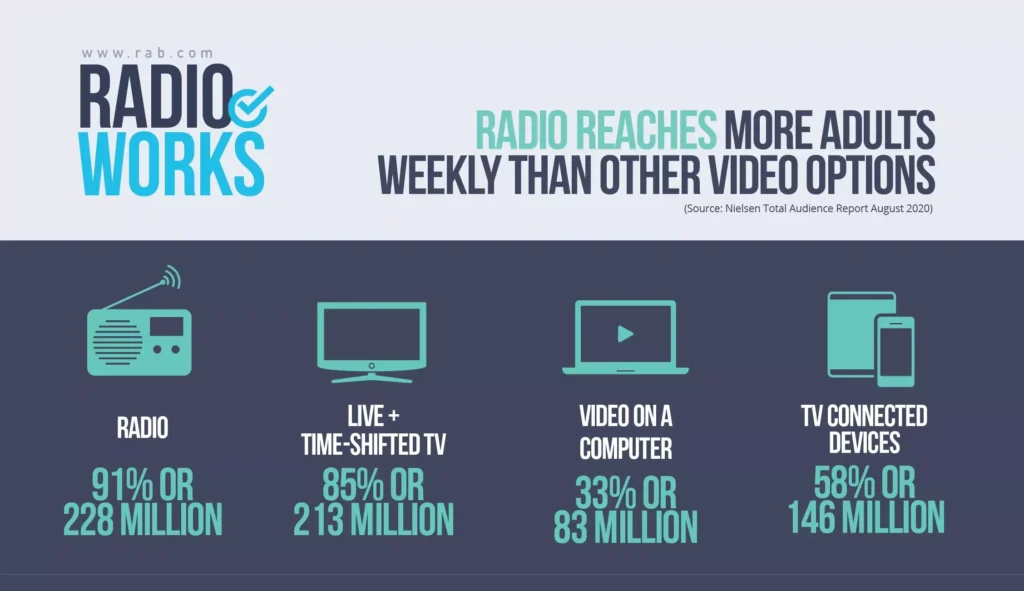
When comparing radio advertising to alternative advertising channels, businesses can consider each channel's unique advantages and disadvantages to determine which is best for their needs. Let's explore some of the unique advantages and disadvantages of radio advertising compared with other forms of advertising.
When comparing advertising options, businesses should consider their target audience, budget, and specific goals. Each advertising channel has strengths and weaknesses that may make it more or less suitable for a given business's needs.
For example, radio is excellent for reaching a broad, regionally-based target audience or building brand awareness . Its broad reach makes it cost-effective on a per-thousand-person basis (a.k.a. CPM) in many markets. It also offers creative opportunities that let advertisers connect with listeners emotionally in ways other media might not.
Television ads allow visual storytelling that can be highly engaging but tend to be more expensive than radio spots. Depending on the network or time slot chosen, TV spots may have a narrower reach than comparable investments in radio.
Digital ads—whether paid social media efforts or pay-per-click campaigns—offer precise targeting options and trackable measurement tools so marketers know exactly what they're getting from their investment.
They offer access to specific demographics and individuals likely interested based on behaviours tracked online rather than general market segments; however, digital ads' costs per impression or click are often higher than those associated with radio.
A local jewellery store looking to advertise an engagement ring collection might use radio to promote the selection since many engaged couples listen regularly.
Alternatively, they could run paid social media ads aimed at people who recently updated relationship status information through specific platforms.
In conclusion, Radio spot placements come with distinct benefits, such as broad audiences reachable at cost-effective rates per thousand impressions (CPM), plus notable creative opportunities.
To fully appreciate how well it fits into broader discussions about marketing and comparing various ad types, company decision-makers must also weigh factors such as would-be viewer or listener demographics, budgets and campaign goals.

- Hertz, Tony (Author)
- 176 Pages – 07/18/2013 (Publication Date) – Panoma Press (Publisher)
In conclusion, radio advertising offers a broad audience reach, cost-effectiveness, and creative opportunities for businesses looking to promote their products or services. It provides an effective medium to deliver targeted messages and engage with a broad audience. The advantages of radio advertising, such as its broad reach, high degree of unduplicated audience, and affordability, make it an attractive option for businesses of all sizes. By utilising proper media planning, high-performing creatives and measuring the success of their campaigns can maximise the impact of radio advertising on their marketing efforts.
Furthermore, many examples demonstrate how radio has been used successfully to reach specific target audiences and drive business growth/ Radio advertising is particularly effective when advertisers understand who they are trying to target (their target audience), leverage the unique strengths (and limitations) or radio as well as create engaging ads. This engagement often happens through campaigns with interactive elements like online competitions or listener callouts.
In conclusion, while there are no magic answers about how much budget should be spent on which channel, etc., we know that traditional ‘mass' channels such as TV and audio still play a massive role in connecting with huge (and engaged) audiences at scale. Based on current research, people's consumption patterns show that mass consumption has stayed the same over the last 12 months. So, if you want your message heard by many people … there's still something to be said around considering these more prominent radio advertising channels.
Last update on 2024-04-30 / Affiliate links / Images from Amazon Product Advertising API
Stuart Crawford
Need help building your brand.
Let’s talk about your logo, branding or web development project today! Get in touch for a free quote.
Leave a Comment Cancel reply
Trusted by businesses worldwide to create impactful and memorable brands.
At Inkbot Design, we understand the importance of brand identity in today's competitive marketplace. With our team of experienced designers and marketing professionals, we are dedicated to creating custom solutions that elevate your brand and leave a lasting impression on your target audience.
- All Solutions
- Audience measurement
- Media planning
- Marketing optimization
- Content metadata
- Nielsen One
- All Insights
- Case Studies
- Perspectives
- Data Center
- The Gauge TM – U.S.
- Top 10 – U.S.
- Top Trends – Denmark
- Top Trends – Germany
- Women’s World Cup
- Men’s World Cup
- News Center
Client Login
Insights > Media
For advertisers, radio is worth listening to, 4 minute read | april 2014.
Radio has come a long way since it first began crackling across the airwaves in broad fashion 100 years ago. Today, in addition to entertaining listeners around the globe, radio is a powerful way for companies and brands to engage with consumers.
In fact, a recent Nielsen Catalina Solutions (NCS) study found a direct link between radio advertising and brick-and-mortar retail sales—evidence that money spent on radio is money well spent. In this first major radio effectiveness study, the research found that each dollar of ad spend generated an average sales return of $6 from the listeners in the 28 days after they heard the ads.
For the study, NCS reviewed the effectiveness of radio advertising by looking at the impact of specific ad campaigns across 10 brands—eight consumer packaged goods (CPG) brands and two retail brands. To reach its findings, NCS used a combination of data collected from Nielsen Portable People Meters (PPMs) and information from 60 million shopper households to arrive at a single-source methodology that measured the specific media buys of the 10 brands across all radio commercials measured by Media Monitors on national and local stations.
Radio Works
While the study found that advertisers gained an average $6 return for every $1 spent, it identified significantly different returns across categories. Notably, the two retailers generated more than 10 and 23 times the return on the high end, while a soft drink brand and breakfast bar pulled in less than two times the return on the low end—though all provided positive return.
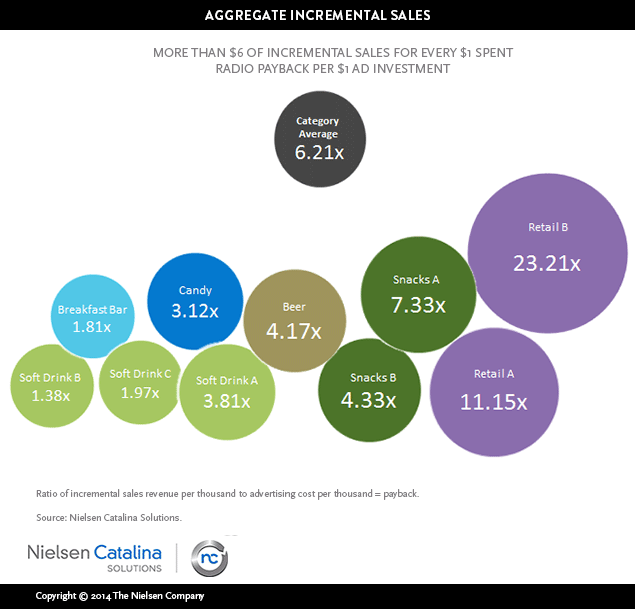
On average, radio drove 5.8 percent of total sales across the 10 brands, although the actual percentages differed by product category: retailers were at the high end and soft drinks were at the low end. Among the brands, a mass retailer experienced the highest contribution to total brand sales at 15.1 percent.
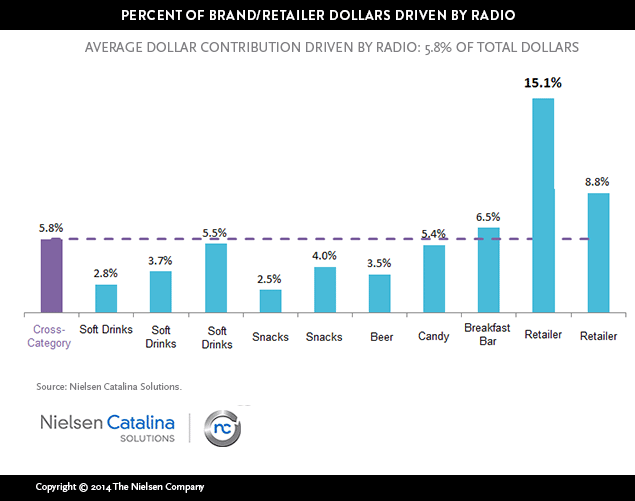
Radio Ad Response Also Varies by Audience Segment
In addition to measuring across categories, NCS measured the response among African American and Hispanic households for the brands with large enough sample sizes. Overall, the radio campaigns proved to have a substantially stronger impact on sales among both of these demographics than the total population.
For African Americans, the indexes range between about 150-240 and 140-185 for Hispanics. For example, the share point gain driven by radio for the soft drink category among African Americans was 7.7 percent, or 92 percent higher than the 4.1 percent share gain among the total population
“Recency” matters
In addition to proving to be strong sales generators, radio ads deliver the goods quickly. In fact, the study found that radio had an immediate impact in delivering a powerful sales lift when the audience heard the ad within a few days of purchase. A consumer exposed to an ad within one day of purchasing increased the brand share by 9 percent, while messages delivered 28 days prior to purchase only increased share by 3.4 percent.
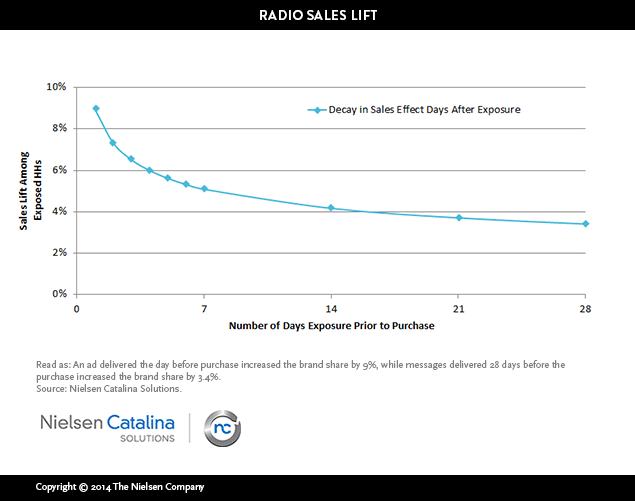
The Key to Gaining Meaningful Sales Results
Since CPG brands typically run low gross rating point (GRP) levels in radio, especially as compared to retailers, radio doesn’t appear to be effective for driving sales. This, in turn, inhibits marketers from upping the ante in their radio spend, fostering a cycle of low investment.
So what’s the key? A single-source methodology.
By using single-source methodology, which links advertising and sales response for the same households, we can determine that radio does indeed drive sales. However, the increase in sales is only among the small number of audience members that the ad reached due to the low GRP levels of the media schedules.
For one of the snack brands, the radio campaign increased actual brand share by 32 percent and by 3.4 share points among consumers who heard the ad versus those who did not hear it. These are large increases, though among a small number of people.
Into the Golden Age
Over the past year, we’ve learned that measuring the actual retail sales impact of radio advertising is both possible, and scalable. Using single-source data with purchaser information to determine marketing effectiveness is a significant leap for advertising in this traditional, mass medium. And as a result, radio may just now be coming into its golden age.
Methodology
These studies were conducted May 17, 2013 to Sept. 21, 2013 using a true single-source dataset. This single-source dataset was created by matching households from the NCS 60 million frequent shopper card data and Nielsen’s listening (PPM) data from 72,748 persons.
The Nielsen persons are combined into 32,000 households. Of those, 14,244 were the same frequent shopper data (FSD) households, thus delivering 14,000 households that had both exposure to radio and purchased the supermarket products.
Within those 14,000 households, there were between 3,500 and 9,000 category-buying households eligible for analysis depending on the category of each brand. The study included all CPG brands that had enough exposed brand purchases. In other words, they had enough advertising against a large enough brand to produce a large enough sample to report.
Related tags:
Related insights
Continue browsing similar insights.
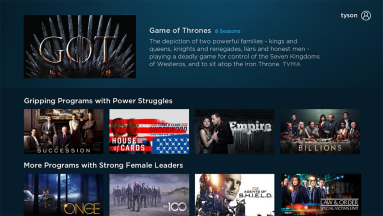
Metadata matters: Powering future FAST channel success
This guide will help FAST channels prepare for the future, when search and discovery features within individual services…

How marketers can advance personalized marketing across the digital advertising ecosystem
Quality audience data is the key to advancing personalized marketing initiatives across the digital advertising…
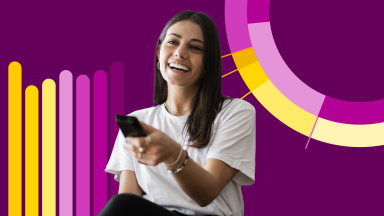
2024 Upfronts / NewFronts Webinar
Tune in for a conversation with Nielsen and the 4A’s on CTV insights and perspectives media planners should understand…

Find the right solution for your business
In an ever-changing world, we’re here to help you stay ahead of what’s to come with the tools to measure, connect with, and engage your audiences.
How can we help?
- Compilation Reels
Case Studies
- Socially Responsible Ads
Check out the advertising industry’s most compelling case studies, from print and digital to experiential and radio, that showcase the best cause-related ads and innovative marketing campaigns.
- Experiential
VW’s giant four-hour ad
Smells like McDonald's spirit
A musical idea that’s up to scratch
Using AI to unlock the power of books
BMW causes a buzz at electric charging stations
Art that gets under the skin
A virtual police station to protect women
Redirecting fashion to warm the homeless
A theft executed to the letter
Even ketchup at a shoot-out has to be Heinz
- Next Page »
Media Ideas Newsletter

Agency News Feed
WALL’S REVOLUTIONIZES PRICEBOARD TO BEAR POWERCUTS
No One Likes Healthcare Advertising. But They Could.
Mammoth Lakes Redefines Outdoor Adventure in "Unreal for All"
Meet Nellie Murray, The Media Planner Behind Cheese Heads' Innovative Campaigns
Lucky Generals' first campaign for Cruzcampo looks to super-charge the brand after hugely successful UK launch
Production News Feed
Katya Brook Conjures an Otherworldly Traveler for DELSEY Paris X Visual Pleasure Magazine
IDLES reimagines Iconic Coldplay Video using AI
Rodeo Production welcomes new Executive Producer Travis Richel in Toronto
AudioGO Blog
- There are no suggestions because the search field is empty.
Case Study: Radio Advertising vs. Digital Audio Advertising
by Eric Loughridge
March 25, 2021 • 5 min read
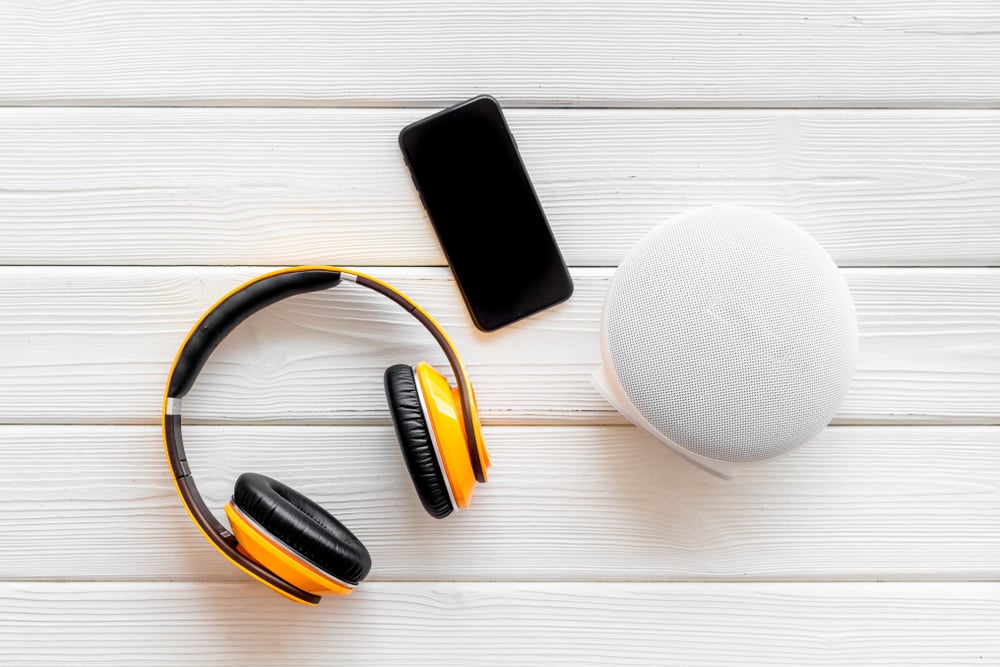
Case Studies
Related articles:
Awareness is always the start to any customer's journey. It's the part when a person gets introduced to your business (or organization, cause, event, etc.) for the very first time.
While it's your job as the marketer to try and get the word out to as many people as possible.
AM/FM radio has traditionally been one of the most effective channels for raising awareness, largely because it used to reach as much as 98% of all working-aged Americans. But as this next generation of listeners continue to flock more and more to streaming audio apps , we're actually beginning to see more and more long-time radio advertisers follow suit.
Like South Bay Paints. Whose successful pivot to digital audio advertising is the subject of our story.
South Bay Paints is a local chain of Benjamin Moore franchisees in Santa Clara County, California. They’ve been in operation for 31 years and they've relied almost exclusively on radio as their go-to awareness channel for all of them.
But, like most other things, that all changed in 2020.
Drawn by the growing popularity of Digital Audio (podcasts, in particular) - and the appeal of an affordable self serve platform that completely automates ad buying and creative production - South Bay Paints began to use AudioGO in earnest during the pandemic as a way to reach local customers who were quarantining at home and looking for help around the house.
The Solution
Since the start of the pandemic, in-home audio streaming has increased 44% according to Edison Research. During that same time, the IAB also found podcast listening had jumped a dramatic 21% as well.
Meanwhile, South Bay Paints was launching a series of ads as part of their 'Hire a Painter' campaign. Using AudioGO, the paint and supplies chain was able to take advantage of a few features you won't normally find in traditional radio advertising, like:
- With radio, getting an ad recorded would typically require a contract with some outside agency or studio. It's very likely that they'll charge more than $20 too.
- With radio, you'll get a much broader audience as targeting is limited to geography. In other words, with Digital Audio you can message specific listeners (by their demographic, interests, user profiles, etc.) - whereas with radio, you're restricted to locations.
- With radio, it would be difficult to measure the impact of their integrated marketing activities all in one place.
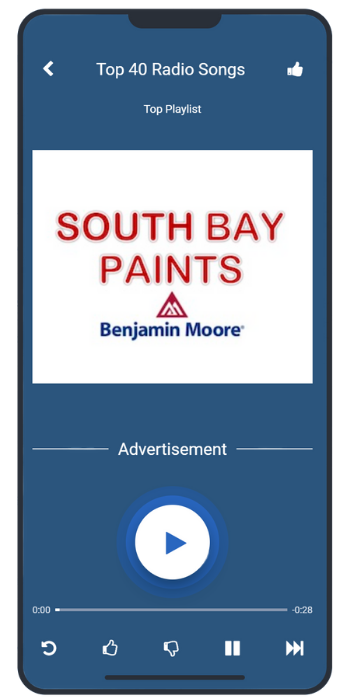
The Results
South Bay Paints' two (2) Spanish and two (2) English-language campaigns ran over 260,000+ ads to an audience of 165,000 unique listeners. 160,000+ (98%) of which heard their 30-second ads all the way through. Engagement you'd love to see from any awareness campaign.
By also leveraging real-time performance data from their AudioGO and Google Analytics dashboards, South Bay Paints was able to improve their campaign effectiveness over time as well.
One example of this was when they experimented with several different genres in their earlier campaigns and found electronic music and news podcasts got more engagements - giving them the data to make decisions that helped their subsequent campaigns outperform the next each time.
Jennifer Stivers of the South Bay Paints team goes on to add:
"For us, the ability to submit a script and get a custom studio-produced ad so quickly was a key factor in what made AudioGO work so well. We were able to create messaging that was timely and get it out quickly."
"In addition to the reporting, I measure ROI in other ways. For example, calls requesting help from Spanish-speaking staff increased during the time frames we ran Spanish ads."
The Bigger Picture
To fully understand this story better, it might help to know that it's not just South Bay Paints, nor is it today's market of listeners, that's undergoing a digital transformation.
The ad industry as a whole is in the middle of its own digital revolution. For decades, they've maintained this old-school service model that involved people in every step of the ad buying, planning, and placement process.
But only in the past few years has a 'smarter' way to advertise emerge, where humans get replaced for intelligent algorithms that automatically fulfill those functions in a matter of clicks. No differently than how AudioGO works.
This new way of digital advertising - called programmatic advertising - is the future. It's data-backed. It's targeted. It's faster. It's easier.
And if you ask Jennifer, she'll also tell you that it's better:
“In 2020 when listeners made the leap to streaming audio and podcasts, we used AudioGO to reach them. The self-serve platform allowed us to control targeting and campaign management effectively with measurable ROI that you can’t get from radio. I would highly recommend AudioGO!”
Related articles
Create your free audiogo account.
Start with your account login information
The email address does not seem right.
Already have an account? Go to login .
Almost There
Complete your account with details about your company
Account Created
You're minutes away from creating your first audio advertising campaign
Create a new account
Ad Blocker detected
AudioGO can't load if you're using an ad blocker. Please disable it and refresh the page to continue.
Help us spread the word

- Free Case Studies
- Business Essays
Write My Case Study
Buy Case Study
Case Study Help
- Case Study For Sale
- Case Study Service
- Hire Writer
Case Study on Radio Advertising
Radio advertising case study:.
Radio advertising is the process of promotion of goods, services and firms which produce them through the radio. Radio is the second after press means of mass media which appeared in the end of the 19th century and in the first part of the 20th century radio was popular all over the world.First of all radio fulfilled the role of the news supplier and entertainer and very soon it began to fulfill the commercial role advertising goods and services maintaining the developing process of mass production and retail trade. Radio advertising exists for more than a century and the principle of advertising has not changed seriously.
There have been lots of investigations on the matter of radio advertising which were based on the economic and psychological factors. With the rapid development of the capitalistic economy the number of firms increased constantly and as a result the necessity and popularity of the radio increased in the same tempo.The number of radio ads increased gradually and with the run of time radio stations started to devote time every hour directly to commercials. Nowadays the blocks of commercials are provided every 15 minutes. A radio station receives the money (generally cash) from various firms and advertises their production in the briefest way.
We Will Write a Custom Case Study Specifically For You For Only $13.90/page!
Another way of advertising is the sponsorship of the certain radio programmes by the definite firms which are mentioned very often with the interval. The majority of radio stations exist only due to commercials, so they try to attract as many firms as possible to accumulate capital and broaden the activity of the station and creating new and new programmes and inviting interesting guests for the radio interviews.Radio advertising is an interesting topic for the research, because the student learns about various means of advertising and reveals the techniques of the appropriate functioning of radio advertising, its structure, history, functions, methods and aims.The young person can observe the issue on the example of the definite radio station and study the schedule of the broadcasting of commercials, the types of commercials and the way of the financing of the radio station. The student is able to evaluate the cause and effect of the matter and the specific organization of the selected manner of radio advertising and suggest the alternative solutions to the existing problem.A case study is a limited issue suggested for the research and the student must demonstrate his awareness about the principles of its writing.
Luckily, one is able to look through a well-organized free example case study advertising radio FM brand and catch the logics of its writing. The young professional is able to take advantage of a free sample case study on radio advertising written by an expert and prepared for the student’s convenience.
Related posts:
- Xm Satellite Radio Case
- Radio and Social Networking
- A case study on Rediffusion Radio
- Kuvo Radio Case Study
- Case Study in Advertising
- Advertising Ethics Case Study
- Ethics in Advertising Case Study
Quick Links
Privacy Policy
Terms and Conditions
Testimonials
Our Services
Case Study Writing Service
Case Studies For Sale
Our Company
Welcome to the world of case studies that can bring you high grades! Here, at ACaseStudy.com, we deliver professionally written papers, and the best grades for you from your professors are guaranteed!
[email protected] 804-506-0782 350 5th Ave, New York, NY 10118, USA
Acasestudy.com © 2007-2019 All rights reserved.

Hi! I'm Anna
Would you like to get a custom case study? How about receiving a customized one?
Haven't Found The Case Study You Want?
For Only $13.90/page
Your browser is out-of-date!
Update your browser to view this website correctly. Update my browser now
Home › Tech and Gear
Special Report: AI Case Studies in Radio
“But in the end, it’s a sauce to the steak. It’s not the steak.”
By Paul Mclane ⋅
Applications of generative artificial intelligence-based tools are spreading throughout radio while other types of AI are already well ensconced. In a recently released ebook, Radio World sought comments from a sampling of companies about how they’re deploying AI.
I’ve already shared the experience of four managers at NRG Media; you can read that here . Below are more case studies that shine a light on how AI is being used in our business.

Beasley Detroit
Patti Taylor is vice president and market manager at Beasley Media Group Detroit.
“Within our organization, we use AI tools for content creation on the programming side as well as for revenue generation on the sales side of the business,” she said.
“AI is used both in the pre-sale and post-sale phases of the sales cycle. In the pre-sale phase, AI can be used to write a compelling introductory email to a prospect. It can ingest language and tone that will appeal to the specific prospect receiving the email.”
An account executive can request an email written for the president of a chain of local hardware stores using a valid business reason based on current hardware trends as well as the prospects personality.
“You can even ask AI to write a strong subject line for this email. AI can then write a compelling audio script for the same hardware store to promote their huge sale on Craftsman tools over President’s Day weekend.”
Throughout the sales cycle, account executives can “delegate” to the AI tasks that, in the past, might have taken a long time to complete. “AI can make a sales rep’s workload lighter so they, in turn, can sell more,” she said.
Taylor said Beasley does not have a general policy about how AI will or will not be used.
“I feel like it won’t be very far away though, as we create more and more content and need to be more vigilant on the output. We have nearly as many content writers as we do on air talent these days, so being cautious when it comes to original content will be paramount.”
But she’s clear that both generative and predictive AI are changing the sales landscape in general.
“Generative AI has become the latest buzz as salespeople everywhere are discussing the benefits of using AI systems to lighten their workload and elevate their overall productivity. Generative AI can serve as sort of a creative arm or administrative assistant taking on tasks that otherwise may have bogged down a sales rep.”
She noted that cold calling is probably one area most account executives would say they dread the most, and it takes the most time.
“But it is absolutely necessary. A current training system we have utilizes AI to help account executive write a compelling email to a prospect, among other things.”
Like NRG described earlier, Beasley Detroit uses an AI tool that can create a video for a customer within a couple minutes by entering only a small bit of information.
“This tool is great in the post-sale so you don’t have to have costly videographers employed, but it also works extremely well in the pre-sale. Sellers on our team can spend less than five minutes and have a great-looking video produced that they can use to get an appointment with a prospect.”
As a result, sellers on her team can go on more calls per week and present more opportunities than they did in the past. “AI has honestly become a game-changer on the sales side of our business as more and more tasks get taken off a seller’s plate by AI,” Taylor said.
How widely will radio broadcasters deploy AI to replace live talent?
“As someone who has spent an entire career in broadcast radio sales,” said Patti Taylor, “I really hope we are not getting close to a time when AI will replace live on-air talent. One of the most valuable selling positions we have is ‘live and local.’ The on-air talent is part of radio’s appeal, in fact, it’s part of the agreement with the audience, and it’s one of the top responses to the question, ‘Why do you listen to the radio?’ Without talent, we lose a key component of the fabric of radio, live talent that lives and works in the market, just like the audience. AI cannot shake hands and kiss babies.”
Where she sees AI fitting in is with show prep, copy ideas, personality preparation and other time-saving tasks.
“Replacing a human being with AI does not compute to me, because humans still have to be responsible for some input in order to get output,” Taylor said.
“AI should be treated like any other software or business solution. We have to find out how AI can best support human-driven projects and initiatives, enhance productivity and eliminate lengthy timelines.”
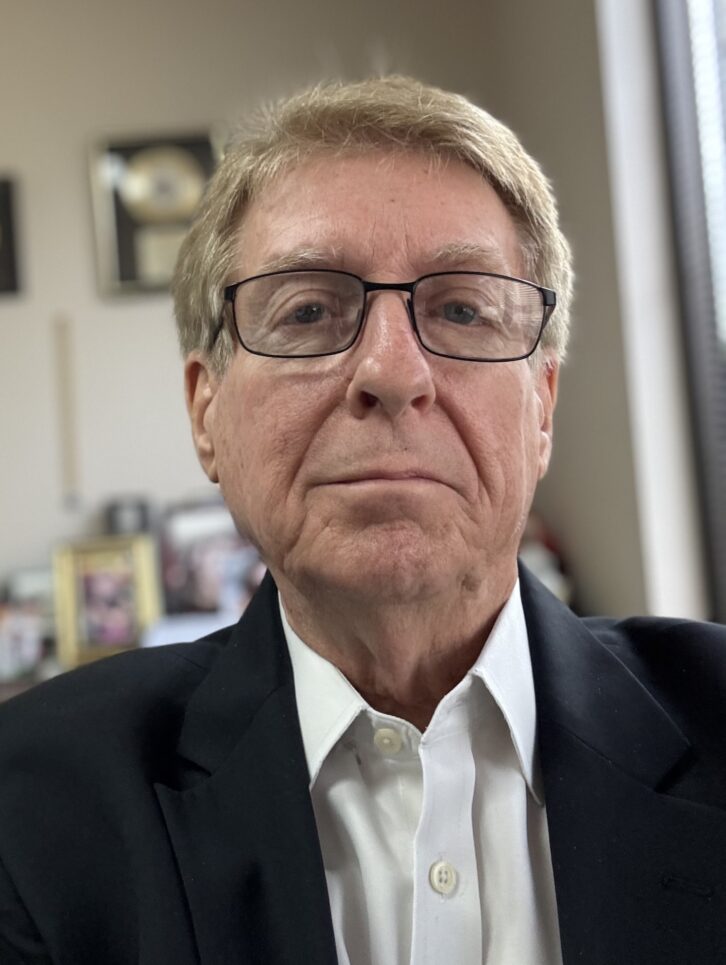
Rome Radio Partners
“104.9 The Rebel” is FM station WRBF in Plainville, Ga., not far from Atlanta, licensed to Rome Radio Partners. It recently deployed an AI jock called A.I. Gunner on its overnight shift using the Futuri AudioAI system.
Majority Partner Howard Toole is impressed with the tool and its available choice of personalities. The platform gathers relevant content from certain approved websites and follow a series of prompts to populate scheduled breaks with synthetically voiced content while making sure a given topic or category doesn’t recur too often.
“It has its quirks. It does have pronunciation problems from time to time,” Toole said.
The station staff had to correct the AI’s pronunciation of “wind” when describing the weather. They taught it not to pronounce “The Rebel” as “The re-BELL” and to avoid certain difficult native American place names. And sometimes the inflection isn’t quite right.
“It really is a work in progress,” Toole said. “Futuri continues to refine it, and the only thing that will happen is it will get better.”
He marvels at the quality that Alpha Media has achieved with AI Ashley , the cloned radio personality that (who?) made headlines last year. “Somebody spent a great deal of time with that. But this is a learning process. While it learns, you’re going to be learning too. Then it’s about how you how you play with it and how you make it sound real.”
WRBF is also using a cloned voice for its promos and liners. The person who had been working in the traditional way as the voice of the station was amenable to an agreement under which WRBF would clone his voice and continue to pay him a retainer.
With that contract in hand, Toole uploaded about 70 minutes of the performer’s audio samples. He said the results are “pretty scary. I think even he was surprised at how much it sounded like him.” Those samples became the basis of new promos.
Eventually, Toole also plans to air phone calls in which AI-generated listeners interact with AI voice talent; these would be programmed in advance. He doesn’t feel it’s important to call attention to the use of AI on the air — “Does it really make any difference? Did it entertain someone?” — but he expects that the FCC eventually may require stations to air a message that some portions of a program were generated with AI. “T hat hasn’t reared its ugly head yet,” he said.
Where else might AI help a radio manager? Toole said Rome Radio has experimented with an AI-based tool in ReelWorld’s Production Vault radio imaging service. He said it is helpful in creating short promos that include AI-based listener comments. He also has seen demos of software that will create spec spots in minutes, though he isn’t using one at this point. And he hopes providers of radio traffic systems will deploy AI more widely so the workflow of scheduling radio commercials can become less hands-on.
In general he is enthusiastic about the possibilities.
“I was using text-to-speech programs 12 or 13 years ago so I’m not afraid of it. But I’m not looking to replace talent. As AI learns, people have to learn how it functions. If we were to look at medicine 100 years from now, people would say, ‘Man, medicine was so crude.’ I think that’s the same thing you can say for AI right now.”
Antenne Deutschland
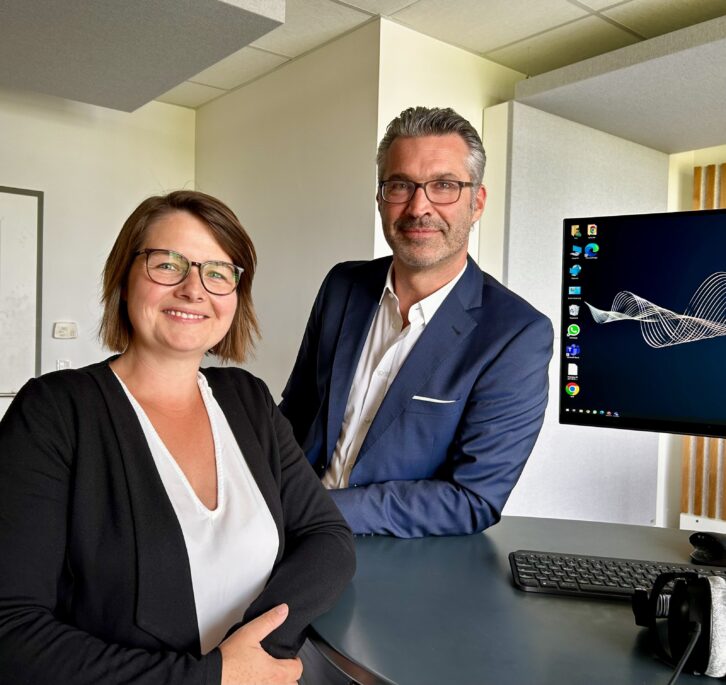
Last year German broadcaster Antenne Deutschland launched a streaming station programmed with AI and voiced by a synthetic air talent named kAI. The channel, called Absolut Radio AI, uses technology from Radio.Cloud . Its cloud-native software creates a schedule, programs the breaks and creates voice tracks with a feature called Voicetrack.ai. The streamed station targets listeners ages 14 to 49 years with pop and dance music.
“kAI not only gets you through the day in a good mood,” its website promises. “He also has a lot to say. He gently introduces you to the topic of artificial intelligence and explains to you how versatile an AI can be used, how it works and where its limits are.”
Antenne Deutschland subsequently put the AI format on a local DAB+ channel in Braunschweig in north-central Germany. It’s believed to be the first over-the-air radio broadcast station programmed and voiced full-time with artificial intelligence.
Managing Director Mirko Drenger told Radio World last year , “For me, the headline is not that it replaces us. It makes us smarter and faster. It’s not about saving money. You still have to write program-specific prompts, develop your own logic and develop it further. It’s about creating more content, faster and smarter. It’s about fun and creativity.”
He said the company is also helping employees “skill up.”
“We encourage them to learn because more and more companies will require these skills. So we’re not just allowing AI; we really want them to learn it, which becomes a big advantage for us. … I don’t know what the future will bring, but we’re not replacing hosts; it’s an add-on.”
Radio World checked in with Drenger in February for this ebook to ask if there had been further developments.
“Our voices are improved, and we will launch a new, additional voice within the next weeks,” he said.
“We will start new topics in moderation to make the station more interesting and generating more and longer active sessions. The AI-Host kAI is already helping out on our other ‘normal’ stations if other hosts are ill or on holidays. This is very interesting.”
Lotus Broadcasting

“AI is not going away,” said Natalie Marsh, vice president/market manager of Lotus Broadcasting in Las Vegas.
“Quite the opposite. It is growing at an almost frightening pace. My viewpoint on things like AI is leaning into how they can help you. … I am going to focus on what I consider to be one of radio’s biggest attributes: connection to the local audience. So we are looking at how AI can help us streamline content creation,” she said.
“Can we use it to help us with more interactive features such as polls, quizzes or live chats? I am also looking at the abilities of AI to analyze listener behaviors and how we can utilize this to enhance their radio listening experience. We also want to figure out if there is an ethical way to use it to enhance engagement for our listeners without losing the human connection that is paramount to radio.”
But Marsh said Lotus is being very cautious in the AI world. “You have already seen the backlash on some industries that might have jumped in too quickly.”
Cox Media Tampa
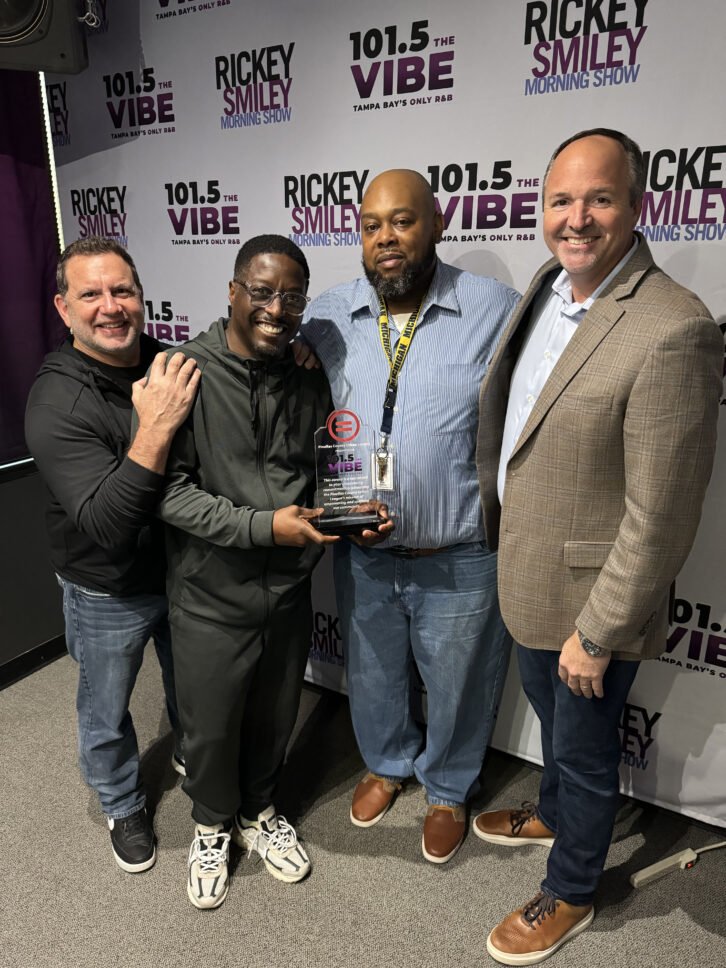
The six-station Cox Media Group cluster in Tampa, Fla., has been using a cloud-based discovery tool from Veritone for some time.
It allows a salesperson or programmer to find instances of a word, advertiser or topic mentioned on the stations. The user can pull up a summary of how many times a client was mentioned, on which stations, including audio soundbites. This helps document the value being provided to a client beyond any commercials that are running.
“It allows us to take credit for what we actually do,” said Jason Meder, vice president and market manager. “And as a medium, I think it makes us stronger.” More recently the cluster began using an attribution tool that helps create models of success for OTA schedules and digital advertising.
“We can match the two and show how our radio and terrestrial media affect search habits and digital advertising,” Meder said. Typically tied to an advertiser’s Google Analytics, the platform provides insight into how on-air content drives online activity — searches, social mentions, website activity — for the advertiser.
In general Meder takes a cautious mindset about new AI tools. “We just want to be extremely careful how we use it, so that there’s no negative impact on our business or reputational damage that could happen from sharing data that that shouldn’t be shared. It’s critical with AI or any new tool [to use it] in a strategic, safe and productive way.”
He said Cox has a taskforce that considers new tools and explores their implications before deployment.
“As the market manager I’m probably the probably the least tech-savvy guy in the building. We’ve got folks on the tech side, folks on the legal side. You put their brains on it and you end up with a with a pretty good decision-making team that can define the guardrails for the rest of us to operate it.”
The cluster has five music stations and one talk. It is not using AI-based clones or synthetic voices, though Meder has heard demos of products in the marketplace. “It’s really amazing how technology will allow these programs to not only do the voice work but go out and create the content from websites. And it’s hard to tell the difference from a real radio talent.”
He’s similarly impressed with tools that can take a business name and website and within a few minutes write and produce a radio-ready commercial. And he expects AI to have a significant impact in commercial production, thanks to its ability to create or clone thousands of voices.
Like most radio executives we’ve talked to, Meder says he would not use AI to replace people but to create efficiencies and workflow. He says radio must protect the human connection for which listeners tune in.
He would want the audience to know if an AI voice was being used. “Absolutely. I think the minute you lose the trust of your audience, you’ve lost everything. People tune in because they want live and local programming and because there’s somebody on the other end of that microphone whom they feel like they can identify with,” he said.
AI should be used to create workflow opportunities and make the product better. “But I don’t believe it can be used to replace people in our core, especially on the air.”
Media Solutions

Allard Ruyl is the CEO of Media Solutions, sales house of Talpa Network in the Netherlands. He told the website Marketing Report that he expects AI to bring significant benefits to the media industry.
“We are running multiple tests at the same time,” he said. “For example, we are currently in an operational phase in the field of audio, where we are already using advanced text-to-speech technology to create artificial voices for audio commercials.” Talpa is using software from Adthos for that project.
“In addition, we are also planning tests for video in the long term, where we want to apply similar technology. We are investigating how we can integrate this with dynamic advertising, just like with audio. The ultimate goal is to seamlessly align data and creative content, resulting in more effective and personalized campaigns.”
Talpa Network also has an AI Hub, which he said “continuously tests new apps and possibilities and thus keeps the company informed and inspired. And of course to see whether tools can be used safely.”
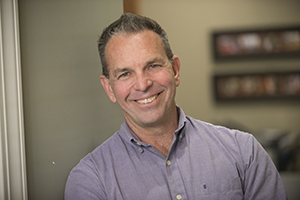
AI tools including voice cloning have allowed HIS Radio to expand the amount of local content it airs on its regional network of stations.
HIS Radio is part of the Radio Training Network; it broadcasts adult contemporary Christian music on about 20 FM signals across nine markets in the Carolinas and Georgia.
“Since we’ve grown onto those sticks and into all those local markets, I wanted to deliver local content, even though the jocks and music are coming out of Greenville, S.C.,” said Rob Dempsey, station manager and morning show host.
“With this technology you can localize anything. So all the stops are localized, the weather is localized, we have three breaks an hour during the weekdays. And we’re expanding to the weekends now to deliver that local content.”
Using Futuri AudioAI, the organization cloned the voices of its main air talent, beginning last August. The clones populate three 18-second breaks per hour on each station with locally relevant information.
“I’ve made very clear to our team that this is never going to replace voice tracking or a live shift,” Dempsey said. “Talent is not going to be replaced by AI. However, we can enhance the workload and our local content using AI.”
He said that although the talent themselves can tell the difference between their own voices and the clones, listeners cannot. HIS Radio does not actively call attention to its use of AI, though Dempsey said he would not hide it from anyone who inquired. And if a talent leaves the organization later, HIS Radio has agreed it will not continue to use their voice.
“It’s absolutely amazing how the technology has grabbed the vocal print,” he said.
“You can give it a trait — friendly or humorous or charismatic, they’ve got a lot that you can pick from. They even have pitch and pacing, and you can make small adjustments. And while it’s not perfect, it’s getting the job done.”
The system uses prompts to create promos by pulling from relevant sources such as lists of Christian concerts scheduled in the area. “I have a prompt, ‘What’s going on that’s family-friendly in Horry County,’ which includes Myrtle Beach. It will search the family-friendly activities in that area and list two or three in an 18-second break.”
The software can vary the way that it delivers content in an “artful” way; it can be trained to avoid certain practices such as addressing listeners in the plural.
“I like my talent to speak to one person, not to an audience,” Dempsey said. “At first our AIs were saying ‘So, folks …’ but I can go in and ban that phrase. Also, now it can give the weather with more personality rather than in a statistical, matter-of-fact kind of way. And it will no longer refer to the weather ‘out there,’ which disconnects us from the listener; I can ban that phrase too.”
Dempsey notes that artificial intelligence tools are all around us already. “Alexa is AI, Siri is AI, and the way that we search on Google.” HIS Radio also uses AI to help in the ad-writing process.
“I can go to ChatGPT and say ‘Write me a 30-second radio spot for XYZ,’ and it will crank out a script for me. And AudioAI has a plugin called SpotOn where you can type in the website of an organization and it will write 30- or 60-second copy and produce it, with music. I have not seen a perfect radio copy come out, but it’s been good, and I can massage it.”
He calls AI a tool that is not a replacement for people.
“And you need to take the time to do it right. You need to tweak it, often, to make sure it’s doing exactly what you need to do. Don’t set it and forget it, because then it’s going to go weird on you.”
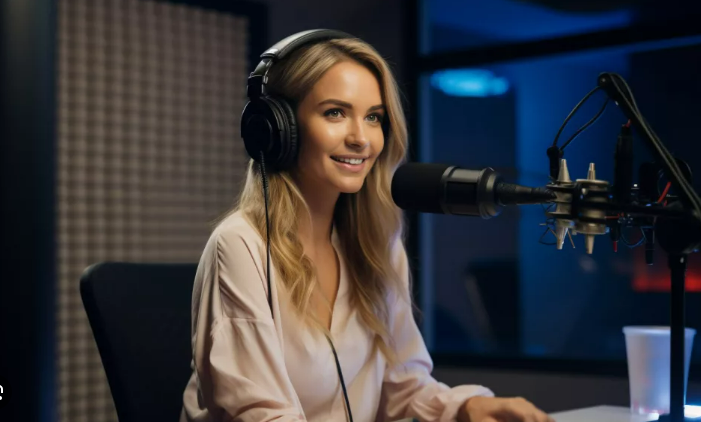
Mid-West Family
A.I. Liam Jones is the overnight talent on classic rock station WZOC(FM) in Plymouth, Ind., serving the South Bend area. His colleague A.I. Alley has the same shift on CHR station WQLQ(FM) an hour up the road in Benton Harbor, Mich.

Both have their own bios and photos on the station websites. Both are artificial intelligence DJs and are labeled as such.
“We think it’s important to identify that this is not real,” said Bill Gamble, general manager of Mid-West Family . “Have fun with it, embrace it. Let the audience in on the joke. Let them look for the mistakes.”
In an era when very few radio stations employ people in the studio at night, AI technology — in this case, Futuri AudioAI — can provide entertainment as well as updating a weather forecast.
“When stations are voice tracked or just playing ‘song-production piece-song,’ they can sound bland. This livens it up,” Gamble said.
“It’s not going to make or break us; it’s not going to be the best thing ever.” But the company is having fun with the concept.
“We had a proposal from a national advertiser looking for endorsements, and we submitted all of our talent. We also submitted the AI talent. They didn’t pick the AI talent but they got a kick out of it.”
Gamble finds it fascinating that he can type just three or four words or tell the AI to talk about a topic, and the technology complies. However, he thinks it is in scriptwriting and production where AI is likely to have a bigger impact.
“At every radio station I’ve ever worked at, you could tell the size of the staff by the number of voices you hear on the commercials, especially when you hear the morning guy back to back,” he said.
“Using AI voices, we don’t have that. It’s not like the voices are going to read a great 60-second spot — they can, but it requires a fair amount of work, finessing and tweaking — but let’s say you’ve got a lot of Home Depot tags and 30 spots that rotate. You’re going to need to do 30 different tags. Having an AI voice helps make the station sound better because it’s not just the DJs you’re hearing.”
Similarly, it becomes very easy to produce station promos when you can simply enter several basic pieces of information and a tool will generate a 30-second script, which either you or the AI can voice.
“Some of the tedious tasks of radio production are being done by AI quicker. Anyone who has been a production director at a radio station has spent their whole day in a room with no windows, cranking out commercials and promos. If I don’t have a second voice or the resources to write six scripts for a car dealer, let AI do it.”
In virtually any radio job, he said, what most people need is more time. “If I can automate a task, like writing a 30-second spot or recording promos — boilerplate work — it gives me time to do more creative work.”
He understands why voice talent would find AI frightening. “If I’m Budweiser and I’m paying someone hundreds of thousands of dollars a year to voice my commercials, and I can have AI do it, it’d be pretty tempting.”
More broadly he acknowledges being unsettled by the proliferation of fake content in our culture.
“It used to be that you could believe what you saw or heard. But when you see a picture of a bombing, and then realize later it wasn’t a real picture, you wonder what is real. That’s why we decided that if we’re going to have any AI talent on the air, we’re going to say so, it’s going to be in their name and on the website.”
Meanwhile, experimenting with the technology gives the company more options. And Gamble adds that it’s just plain fun to play around with.
“I can tweak the pitch of the voice, I can increase the tempo, I want the accent to be like this . And it keeps getting better and better,” he said.
[Read More Radio World Stories About Artificial Intelligence]

What are the Legal Considerations of AI in Radio?

Beasley Gets a New Hub of Its Own in Boston

FCC Proposes $850K in Pirate Radio Fines Against 6 Massachusetts Stations

APRE Elects New Board

WKHS Celebrates 50 Years On Air with TuneFest
Also popular.

10 AI-Based Tools for Radio

Engineer Charles Kinney Is Officially a Radio Legend in Georgia

February Highlights of Radio Tech History

Austrian Dance Station Launches with AI
January highlights of radio tech history.
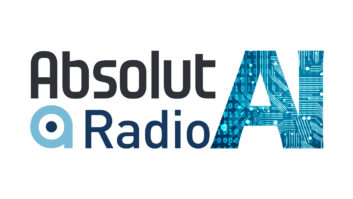
Absolut Radio Gets a Head Start With AI

King: Digital Can Make AM Worth Investing In
April highlights of radio tech history.
- Community Service
- People in the News
- Podcast Ink™
- Eric Rhoads – Chairman
- Deborah Parenti – Publisher
- John Shomby
- Buzz Knight
- Marc Greenspan
- Chris Stonick
- Jeffrey Hedquist
- Roy H. Williams – The Wizard of Ads
- Jeff McHugh
- Women To Watch with Charese Fruge’
- Paige Nienaber’s Midweek Idea Dump
- View Job Listings
- Submit a Job Listing (employers)
- View Resumes (employers)
- Submit Your Resume (job seekers)
- Contact Radio Ink
- About Radio Ink
- Submit a News Tip
- Submit a Community Service Story
- Send us a Classic Photo
- New Subscription (Print or Digital)
- Subscription Renewal
- Log In (Existing Digital Subscriptions Only)
Free Daily Radio News
- Change of Address
- Back Issues
- Free Trial Issue
- Advertise with Radio Ink
- Digital Magazine Login
2024 Medallas de Cortez Finalists Announced
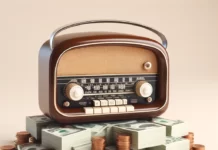
Bouvard: Radio’s Magic ROI Numbers Are 24%-18%-36%

The Extinction of the Non-Compete
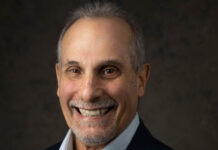
Going Up Against The Big Dog
Unpacking nab show tech with benztown’s dave ‘chachi’ denes.

With 61,000 broadcasters now (mostly) caught up on sleep from NAB Show 2024 in Las Vegas, Radio Ink is taking one last look at the technology that defined this year’s convention in a conversation with Benztown President Dave “Chachi” Denes.
Dave “Chachi” Denes: You know, I walked out of NAB Show 2023 with a fair amount of anxiety, specifically around AI. It just all kind of culminated at that moment. I know that ChatGPT had just emerged in November 2022, and something about NAB Show 2023 hammered in that AI is here. My team all went out to dinner and all tried to predict where AI would be a year later.
And it was really interesting to see where AI is a year later. I am much more comfortable about AI in 2024 than where I was in 2023. It feels a lot less dystopian, if that makes sense. I came out of there with some optimism this year and some excitement about the future.
Radio Ink : Of course, you’ve worked more with AI through Benztown’s partnership with ENCO, right?
Dave “Chachi” Denes: Yeah. We’ve got a partnership with ENCO and Compass [Media Networks] on SpecAI. It’s a spec spot commercial production tool. And we partnered together on that several months ago and just launched it a couple months ago. And it’s gotten off to a really good start.
Radio Ink : And, like you, a lot more executives have spent the last year exploring, using, and investing in AI, so there’s more familiarity. How much do you think that has affected the general mood?
Dave “Chachi” Denes: It felt to me that at the ENCO booth, where we spent a lot of our time, and at Cocktails and Conversation there was certainly some optimism about what AI is going to bring – great ways to create new content and to help so many in the industry that are overworked, if you will.
So, I felt that the mood was relatively positive. The Curtis LeGeyt keynote highlighted the big win on AM radio and what’s happening in Congress. I think there’s some positive things overall happening for the industry under his stewardship at the NAB.
Radio Ink : Where you are with Benztown must give you a really interesting bird’s eye view of radio. You work with large and small groups in all market sizes. What did you observe about kind of how each went into NAB Show 2024?
Dave “Chachi” Denes: As a company that creates a lot of content, we see NAB Show as a great opportunity to be able to share with radio executives what we have. It’s our Super Bowl when it comes to being able to meet with all of the executives and mingle with them as well at Cocktails and Conversation. From an executive standpoint, I think a lot of them are there to see what’s out there, what vendors such as ourselves have in terms of new products and services and specifically technology.
Obviously on the gear front, it’s so well-represented at NAB Show, whether you’re looking for a microphone, a new board, or a new play-out system. I felt in terms of the executives and the companies that are out there, that it was a good show. There seemed to be a lot of transactional business going on.
Radio Ink : You had a great Broadcast Education Association panel with Sona Movsesian from Conan O’Brien Needs a Friend , as well as Beasley Media’s Justin Chase and Compass Media Networks’ Hiram Lazar for the Library of American Broadcasting Foundation. What did you see in the way of a young and future radio broadcasters?
Dave “Chachi” Denes: This was my first time attending BEA and I was so incredibly impressed with what Heather Birks and the entire BEA team put together. There are hundreds of panels all across the spectrum from sports broadcasting to music radio programming to personalities. You name it, there’s a panel for it.
According to Heather, I think they had a bigger turnout for that than they’ve ever had before or more students apply to go. I think that was a real nice breath of fresh air. I think as an industry, the more we can do to embrace young people getting into our business, the better. I think the BEA does a great job of helping accelerate students’ careers. In fact, we’re actually interviewing someone that was part of the BEA last year. She’s graduating in the spring and she stayed in touch with me for over a year. I met her at NAB Show in 2023, and I think there’s a good chance we’ll be hiring here over the summer.
Radio Ink : Jumping back to a larger level – outside of AI, what was something that really caught your eye at the show?
Dave “Chachi” Denes: You know, Veritone has a fascinating technology that allows you to ingest all of your material sitting on the shelf over the year, and then you can access it very quickly by certain keywords and metadata that they then code all of the content with. I saw several companies with different services like that, which I found very interesting.
Being on the board of the Library of American Broadcasting Foundation, all the content that has been such a huge part of our culture is sitting around un-utilized. There’s really a place for a lot of this great broadcasting history. Hopefully these engines can repurpose that for the future.
Radio Ink : One more note on your time in Vegas – you got to sit down with incoming RAB CEO Mike Hulvey out there for your podcast Chachi Loves Everybody . How was that?
Dave “Chachi” Denes: It was really great to meet him. I’d never met him before. I’d obviously heard about his career and watched him from afar over at Neuhoff, but what a fascinating broadcaster. 15 years old and was really just, really as a child knew very early on this is what he wanted to do. And he’s done every aspect virtually of the business.
He’s been on air, he’s been a producer, he’s been a general manager, he’s been the CEO of Neuhoff Communications. He’s been part of the RAB for over 20 years. And so just a highly qualified, very dynamic person. I was very excited to get to know him more. Filling [outgoing RAB CEO] Erica [Farber]’s shoes is probably one of the most difficult jobs you could possibly be given, but I think he is really well equipped for it and I think he’s gonna be a phenomenal leader and I’m excited to work closer with him.
RELATED ARTICLES MORE FROM AUTHOR
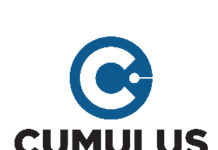
Bhargava Sparks FCC Review of Cumulus’ Foreign Stakes
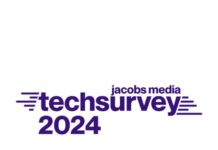
AM Radio, Gen Z, Talent, and Apps Find Wins In Techsurvey 2024

Audio Advertising ROI Far Outpaces Digital, UK Study Shows
Leave a reply cancel reply.
Save my name, email, and website in this browser for the next time I comment.
- Job Title * Please choose an option President/CEO Market Manager General Manager Director of Sales Sales Manager Programming / Ops Manager Account Executive On-Air / Host Digital Manager Marketing Manager News Director Producer Engineer Consultant Administration Legal Counsel Other
- Example: Consultant
- Company Name *
- Comments This field is for validation purposes and should be left unchanged.
Our Print Magazine: Radio Ink

eBay TikTok

Working at Global isn’t just a job – it’s an experience.
- Skip to main content
- Keyboard shortcuts for audio player
- Your Health
- Treatments & Tests
- Health Inc.
- Public Health
Reproductive rights in America
What's at stake as the supreme court hears idaho case about abortion in emergencies.

Selena Simmons-Duffin

The Supreme Court will hear another case about abortion rights on Wednesday. Protestors gathered outside the court last month when the case before the justices involved abortion pills. Tom Brenner for The Washington Post/Getty Images hide caption
The Supreme Court will hear another case about abortion rights on Wednesday. Protestors gathered outside the court last month when the case before the justices involved abortion pills.
In Idaho, when a pregnant patient has complications, abortion is only legal to prevent the woman's death. But a federal law known as EMTALA requires doctors to provide "stabilizing treatment" to patients in the emergency department.
The Biden administration sees that as a direct conflict, which is why the abortion issue is back – yet again – before the Supreme Court on Wednesday.
The case began just a few weeks after the justices overturned Roe v. Wade in 2022, when the federal Justice Department sued Idaho , arguing that the court should declare that "Idaho's law is invalid" when it comes to emergency abortions because the federal emergency care law preempts the state's abortion ban. So far, a district court agreed with the Biden administration, an appeals court panel agreed with Idaho, and the Supreme Court allowed the strict ban to take effect in January when it agreed to hear the case.

Supreme Court allows Idaho abortion ban to be enacted, first such ruling since Dobbs
The case, known as Moyle v. United States (Mike Moyle is the speaker of the Idaho House), has major implications on everything from what emergency care is available in states with abortion bans to how hospitals operate in Idaho. Here's a summary of what's at stake.
1. Idaho physicians warn patients are being harmed
Under Idaho's abortion law , the medical exception only applies when a doctor judges that "the abortion was necessary to prevent the death of the pregnant woman." (There is also an exception to the Idaho abortion ban in cases of rape or incest, only in the first trimester of the pregnancy, if the person files a police report.)
In a filing with the court , a group of 678 physicians in Idaho described cases in which women facing serious pregnancy complications were either sent home from the hospital or had to be transferred out of state for care. "It's been just a few months now that Idaho's law has been in effect – six patients with medical emergencies have already been transferred out of state for [pregnancy] termination," Dr. Jim Souza, chief physician executive of St. Luke's Health System in Idaho, told reporters on a press call last week.
Those delays and transfers can have consequences. For example, Dr. Emily Corrigan described a patient in court filings whose water broke too early, which put her at risk of infection. After two weeks of being dismissed while trying to get care, the patient went to Corrigan's hospital – by that time, she showed signs of infection and had lost so much blood she needed a transfusion. Corrigan added that without receiving an abortion, the patient could have needed a limb amputation or a hysterectomy – in other words, even if she didn't die, she could have faced life-long consequences to her health.
Attorneys for Idaho defend its abortion law, arguing that "every circumstance described by the administration's declarations involved life-threatening circumstances under which Idaho law would allow an abortion."
Ryan Bangert, senior attorney for the Christian legal powerhouse Alliance Defending Freedom, which is providing pro-bono assistance to the state of Idaho, says that "Idaho law does allow for physicians to make those difficult decisions when it's necessary to perform an abortion to save the life of the mother," without waiting for patients to become sicker and sicker.
Still, Dr. Sara Thomson, an OB-GYN in Boise, says difficult calls in the hospital are not hypothetical or even rare. "In my group, we're seeing this happen about every month or every other month where this state law complicates our care," she says. Four patients have sued the state in a separate case arguing that the narrow medical exception harmed them.
"As far as we know, we haven't had a woman die as a consequence of this law, but that is really on the top of our worry list of things that could happen because we know that if we watch as death is approaching and we don't intervene quickly enough, when we decide finally that we're going to intervene to save her life, it may be too late," she says.
2. Hospitals are closing units and struggling to recruit doctors
Labor and delivery departments are expensive for hospitals to operate. Idaho already had a shortage of providers, including OB-GYNS. Hospital administrators now say the Idaho abortion law has led to an exodus of maternal care providers from the state, which has a population of 2 million people.
Three rural hospitals in Idaho have closed their labor-and-delivery units since the abortion law took effect. "We are seeing the expansion of what's called obstetrical deserts here in Idaho," said Brian Whitlock, president and CEO of the Idaho Hospital Association.
Since Idaho's abortion law took effect, nearly one in four OB-GYNs have left the state or retired, according to a report from the Idaho Physician Well-Being Action Collaborative. The report finds the loss of doctors who specialize in high-risk pregnancies is even more extreme – five of nine full time maternal-fetal medicine specialists have left Idaho.
Administrators say they aren't able to recruit new providers to fill those positions. "Since [the abortion law's] enactment, St. Luke's has had markedly fewer applicants for open physician positions, particularly in obstetrics. And several out-of-state candidates have withdrawn their applications upon learning of the challenges of practicing in Idaho, citing [the law's] enactment and fear of criminal penalties," reads an amicus brief from St. Luke's health system in support of the federal government.
"Prior to the abortion decision, we already ranked 50th in number of physicians per capita – we were already a strained state," says Thomson, the doctor in Boise. She's experienced the loss of OB-GYN colleagues first hand. "I had a partner retire right as the laws were changing and her position has remained open – unfilled now for almost two years – so my own personal group has been short-staffed," she says.
ADF's Bangert says he's skeptical of the assertion that the abortion law is responsible for this exodus of doctors from Idaho. "I would be very surprised if Idaho's abortion law is the sole or singular cause of any physician shortage," he says. "I'm very suspicious of any claims of causality."
3. Justices could weigh in on fetal "personhood"
The state of Idaho's brief argues that EMTALA actually requires hospitals "to protect and care for an 'unborn child,'" an argument echoed in friend-of-the-court briefs from the U.S. Conference of Catholic Bishops and a group of states from Indiana to Wyoming that also have restrictive abortion laws. They argue that abortion can't be seen as a stabilizing treatment if one patient dies as a result.
Thomson is also Catholic, and she says the idea that, in an emergency, she is treating two patients – the fetus and the mother – doesn't account for clinical reality. "Of course, as obstetricians we have a passion for caring for both the mother and the baby, but there are clinical situations where the mom's health or life is in jeopardy, and no matter what we do, the baby is going to be lost," she says.
The Idaho abortion law uses the term "unborn child" as opposed to the words "embryo" or "fetus" – language that implies the fetus has the same rights as other people.

Shots - Health News
The science of ivf: what to know about alabama's 'extrauterine children' ruling.
Mary Ziegler , a legal historian at University of California - Davis, who is writing a book on fetal personhood, describes it as the "North Star" of the anti-abortion rights movement. She says this case will be the first time the Supreme Court justices will be considering a statute that uses that language.
"I think we may get clues about the future of bigger conflicts about fetal personhood," she explains, depending on how the justices respond to this idea. "Not just in the context of this statute or emergency medical scenarios, but in the context of the Constitution."
ADF has dismissed the idea that this case is an attempt to expand fetal rights. "This case is, at root, a question about whether or not the federal government can affect a hostile takeover of the practice of medicine in all 50 states by misinterpreting a long-standing federal statute to contain a hidden nationwide abortion mandate," Bangert says.
4. The election looms large
Ziegler suspects the justices will allow Idaho's abortion law to remain as is. "The Supreme Court has let Idaho's law go into effect, which suggests that the court is not convinced by the Biden administration's arguments, at least at this point," she notes.

Trump backed a federal abortion ban as president. Now, he says he wouldn't sign one
Whatever the decision, it will put abortion squarely back in the national spotlight a few months before the November election. "It's a reminder on the political side of things, that Biden and Trump don't really control the terms of the debate on this very important issue," Zielger observes. "They're going to be things put on everybody's radar by other actors, including the Supreme Court."
The justices will hear arguments in the case on Wednesday morning. A decision is expected by late June or early July.
Correction April 23, 2024
An earlier version of this story did not mention the rape and incest exception to Idaho's abortion ban. A person who reports rape or incest to police can end a pregnancy in Idaho in the first trimester.
- Abortion rights
- Supreme Court

IMAGES
VIDEO
COMMENTS
Radio Case Studies. Get inspired by great radio campaigns from across the industry with our case study database. Search by Sector, Campaign Objective, Consumer Context, or Campaign Format to find the most relevant examples of how radio can boost your specific communications plan. ... Radio advertising helps BA's web traffic and online ticket ...
The average cost of a 60-second radio advertisement ranges from $5 to $750 when measured by cost per point (CPP). Factors that impact radio advertising costs include size of audience, listener demographics, time of day, the market the ad runs in, whether the ad is sponsored or not, and ad length. As a rule, the more listeners a radio station ...
Click below to browse the case study library below and see why radio matters to businesses of all shapes and sizes. Go to Case Studies. ... Radio Matters Radio Matters is an overarching Radio Advertising Bureau initiative that showcases the strengths of radio in meaningful and impactful ways. 10 Reasons to Advertise Targeting, immediacy ...
In this article, we delve into compelling case studies that showcase the value of advertising on broadcast radio and underscore the significance of local radio in driving marketing success. 1. Local Radio Empowering Local Businesses. A local bakery, seeking to expand its customer base, turned to local radio to spread the word about their ...
We put TalkTalk at the forefront of being a provider that can keep busy family homes connected. We drove drastic increases in all of the target metrics including consideration, perception and campaign message cut through among those listeners who recalled the activity. read the full study. download. other related studies.
The study finds that brands using AM/FM radio find their share of voice impact is four times more efficient, vs. advertisers not using AM/FM. Put another way, brands not using AM/FM radio that increase their share of voice by 10% can expect a 0.26% increase in market share, while those using AM/FM can expect a 1.07% increase in market share ...
In each of the radio ads, you will notice that the background music is the same. This upbeat but non-distracting music serves more than just to set the mood. People remember what they hear. And, in this case, people come to associate that music with Windows and More. With enough repetition, radio listeners only need to hear the music, and they ...
Case Studies. Check out the advertising industry's most compelling case studies, from print and digital to experiential and radio, that showcase the best cause-related ads and innovative marketing campaigns. Send us your Case Study.
Case studies of successful radio advertising campaigns highlight the effectiveness of this medium in driving brand awareness. For example, McDonald's has instant brand recognition over the radio as soon as customers hear their signature slogan, "I'm loving it!" The ad has swept through so many homes and cars they no longer need to say ...
how did global help? The campaign ran from 13th January until 22nd March 2020 across Global outdoor sites, DAX and Radio X. The aim was to complement and boost the effect of the overall campaign. The multimedia nature of the activity increased exposure and ultimately boosted the effects of key KPIs for Mitsubishi.
Peter Field's latest blockbuster study released in the U.K. is called The Long and the Short of It - 10 Years On: Radio's Enduring Role in Effectiveness. This consequential new study lays out hard evidence for how AM/FM radio drives significant lifts in market share, pricing power, sales, profits, and ROI.
Putting the brand front of mind with radio and entertainment. client objective. The objective was to raise product awareness and brand consideration by making Moonpig front of mind when thinking of key occasions and retail moments. They also wanted to extend their overall campaign reach and frequency to a new channel. how did global help?
Below you'll find a collection of radio advertising case studies that explore radio impact on a range of key advertising metrics: British Airways - Online Ticket Sales . What Happened? From the beginning of 2009, British Airways (BA) ran a tactical leisure airtime campaign designed to stimulate immediate web traffic and sales. With a greater ...
Advantages of Radio Advertising. Radio advertising offers several compelling advantages if you want to reach a broad audience. One of the biggest is sheer reach: AM/FM radio dominates the overall Share of Ear —adults 18+'s time spent with audio content—and accounts for 40% of that time. That dominance means it has more audience share than ...
Using single-source data with purchaser information to determine marketing effectiveness is a significant leap for advertising in this traditional, mass medium. And as a result, radio may just now be coming into its golden age. Methodology. These studies were conducted May 17, 2013 to Sept. 21, 2013 using a true single-source dataset.
Case Studies. Check out the advertising industry's most compelling case studies, from print and digital to experiential and radio, that showcase the best cause-related ads and innovative marketing campaigns. Send us your Case Study. Latest. Media.
With radio, it would be difficult to measure the impact of their integrated marketing activities all in one place. The Results South Bay Paints' two (2) Spanish and two (2) English-language campaigns ran over 260,000+ ads to an audience of 165,000 unique listeners. 160,000+ (98%) of which heard their 30-second ads all the way through.
Profit Ability 2: The New Business Case for Advertising, a significant new study on marketing effectiveness from measurement firms Gain Theory and Ebiquity, along with media agencies EssenceMediacom, Mindshare, and Wavemaker UK, was released last week. The study reveals how advertising drives profit over time.
2. It's a Mass Media Platform, so covers lots of audiences. 3. Brand Recall. 4. As research suggests, a consumer needs to listen to an ad 5-6 times before one takes an action or makes an opinion ...
EFFECTIVENESS OF RADIO AS AN ADVERTISING. MEDIUM: A PERCEPTION SURVEY IN DELHI/NCR. Mansi Paul, Lakhwinder Dihhlon, Sanjeev Bansal 3 and Teena Bagga. 4. FM Radio is a med ium that r eaches the ...
Radio Advertising Case Study: Radio advertising is the process of promotion of goods, services and firms which produce them through the radio. Radio is the second after press means of mass media which appeared in the end of the 19th century and in the first part of the 20th century radio was popular all over the world.First of all radio fulfilled the role of the news supplier and entertainer ...
In a recently released ebook, Radio World sought comments from a sampling of companies about how they're deploying AI. I've already shared the experience of four managers at NRG Media; you can read that here. Below are more case studies that shine a light on how AI is being used in our business. Patti Taylor, Beasley Media Group Beasley Detroit
Successfully generating conversations about arthritis and campaign participation with radio advertising. Your privacy is important to us. ... Our Versus activity ran across all radio brands, DAX, and podcasts, and was broken out into multiple different strands of activity, together delivering over 313 million impacts and a reach of 26 million ...
With 61,000 broadcasters now (mostly) caught up on sleep from NAB Show 2024 in Las Vegas, Radio Ink is taking one last look at the technology that defined this year's convention in a ...
Using radio and entertainment to increase consideration and frequency. ... read the full study download. other related studies. lego. eBay TikTok. moonpig. back to all case studies. careers. careers. careers. careers. Working at Global isn't just a job - it's an experience. global careers. Figures sourced from: RAJAR / Ipsos-MORI / RSMB.
The case, known as Moyle v.United States (Mike Moyle is the speaker of the Idaho House), has major implications on everything from what emergency care is available in states with abortion bans to ...
Test case validations include transmitter and receiver, demodulation, and radio resource management for narrowband internet of things over non-terrestrial networks; Validations support ...